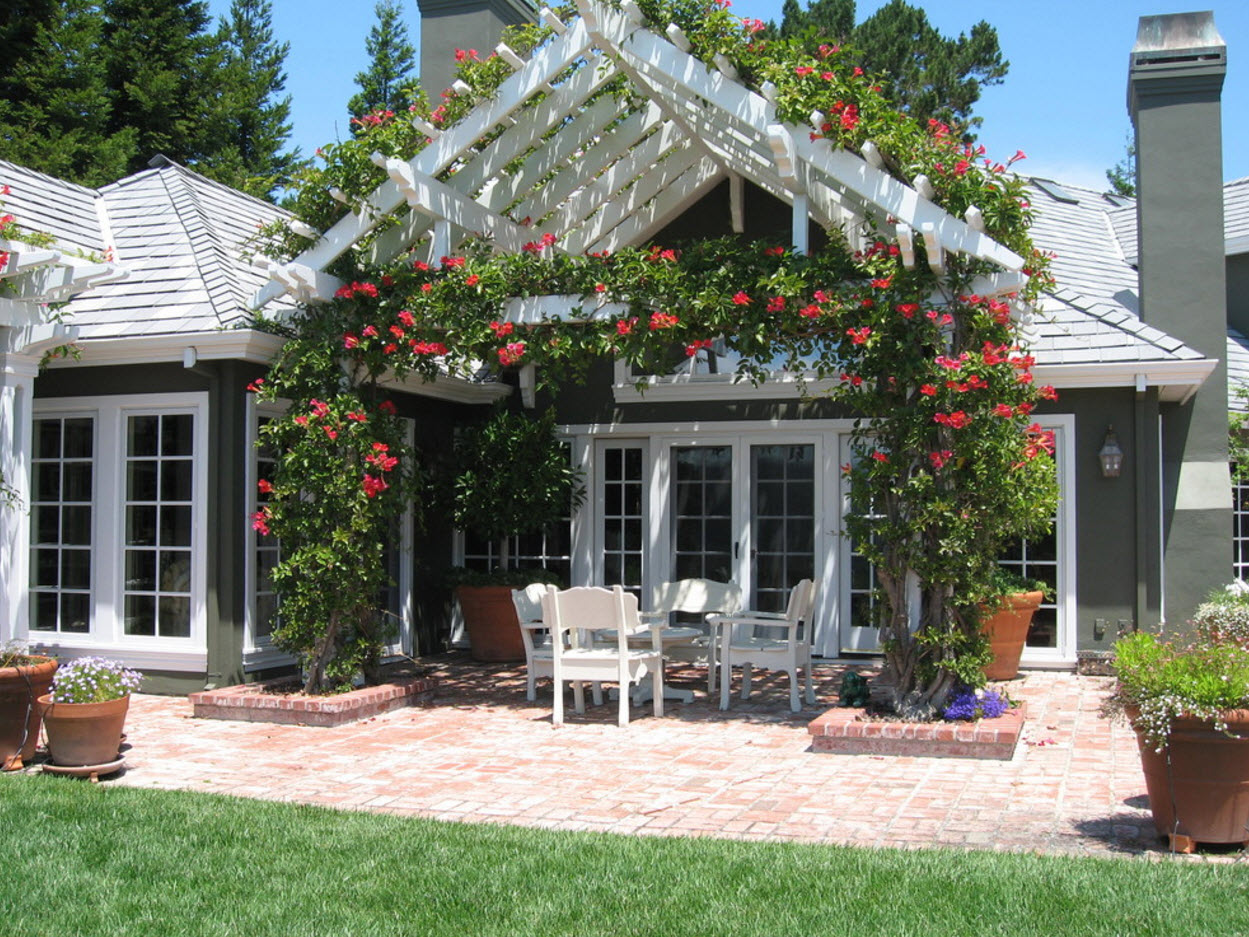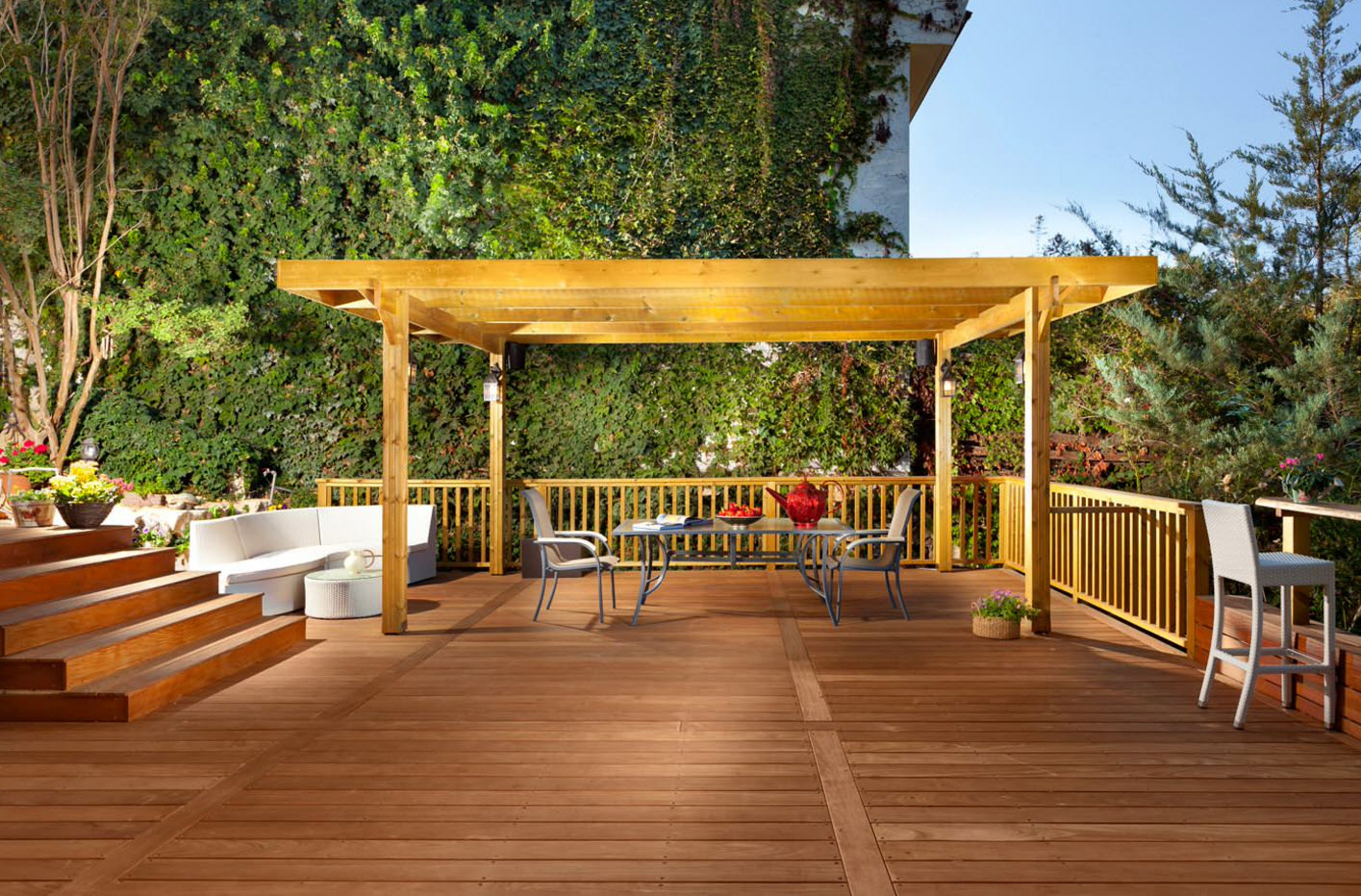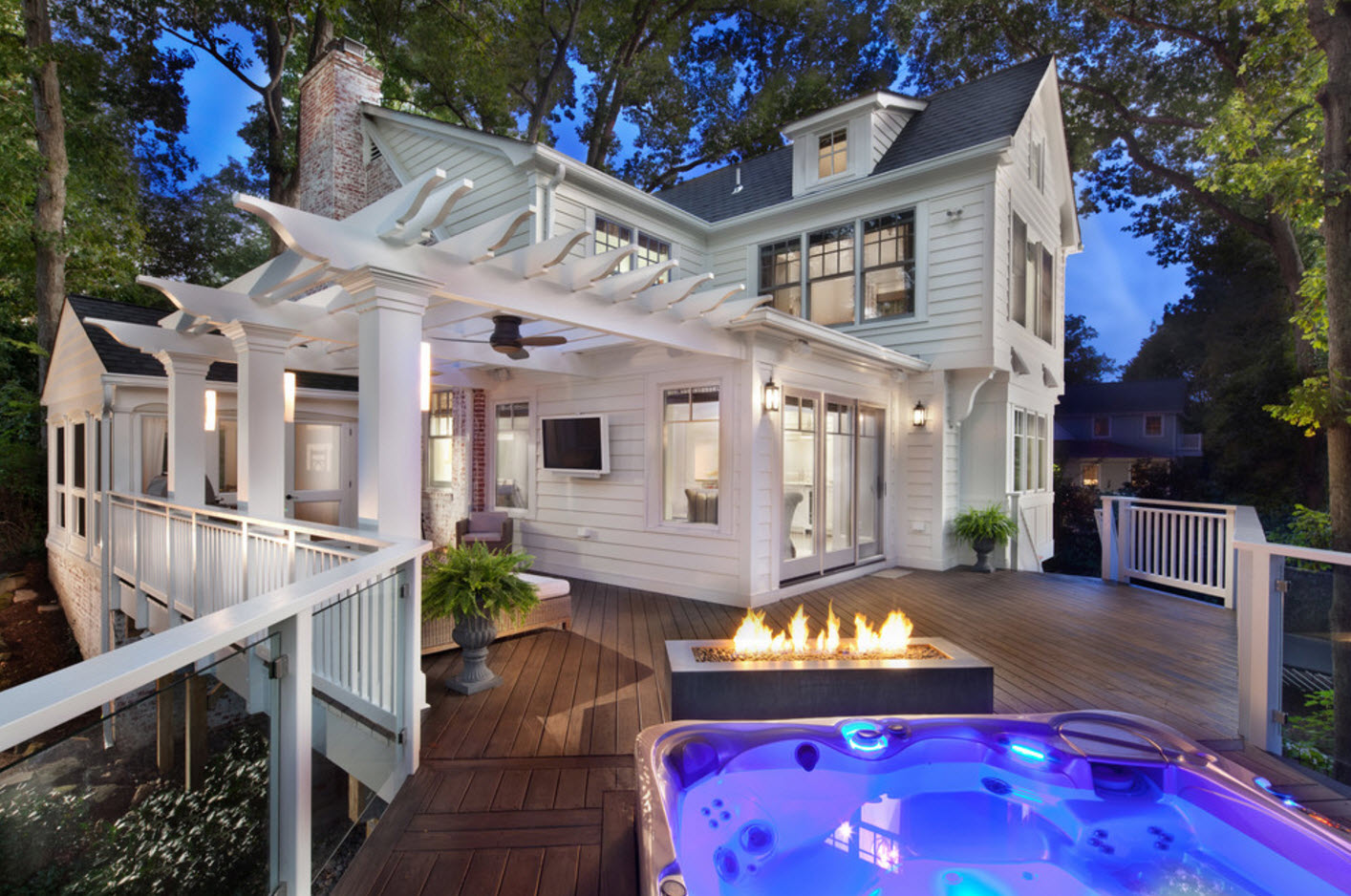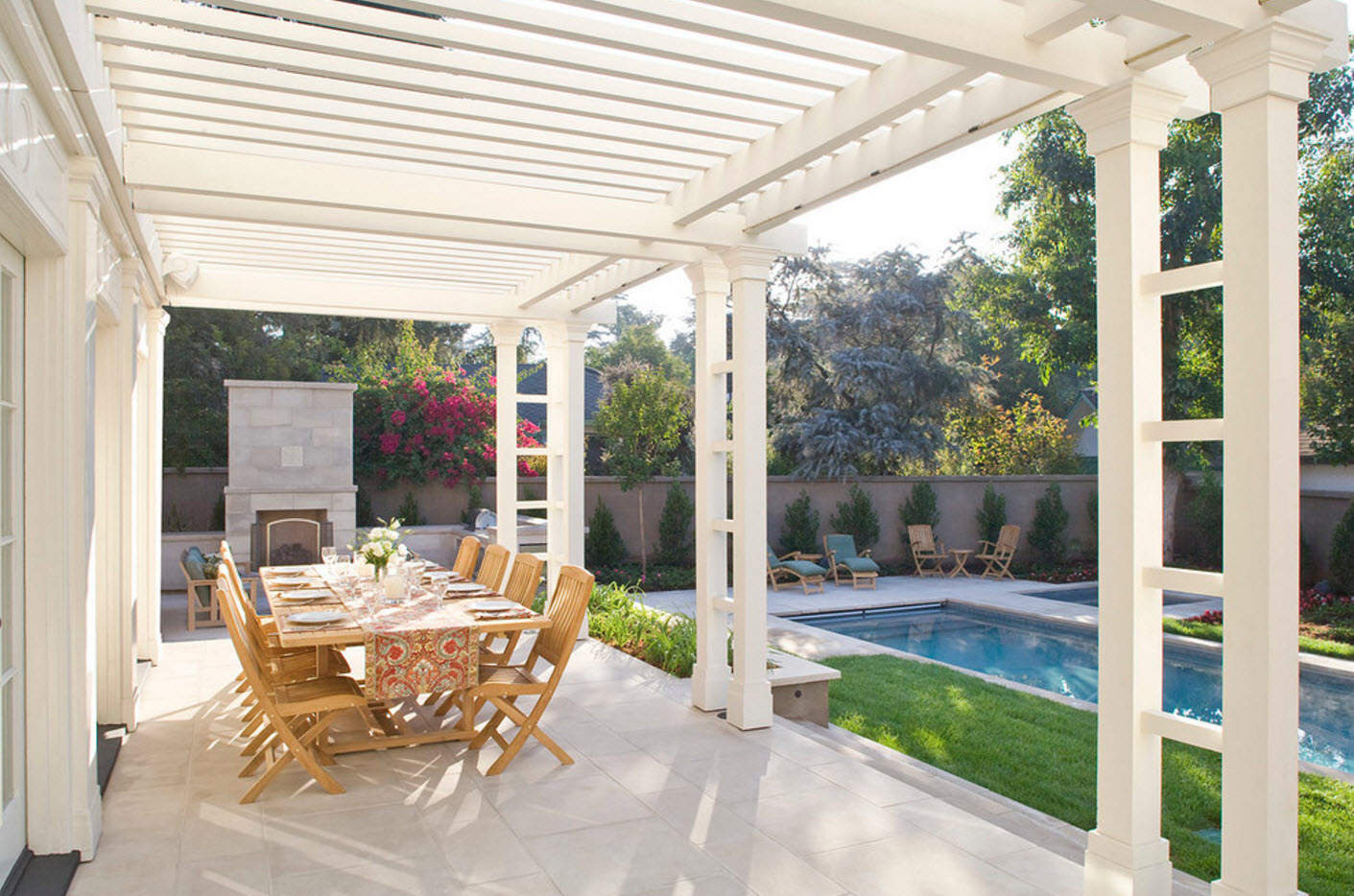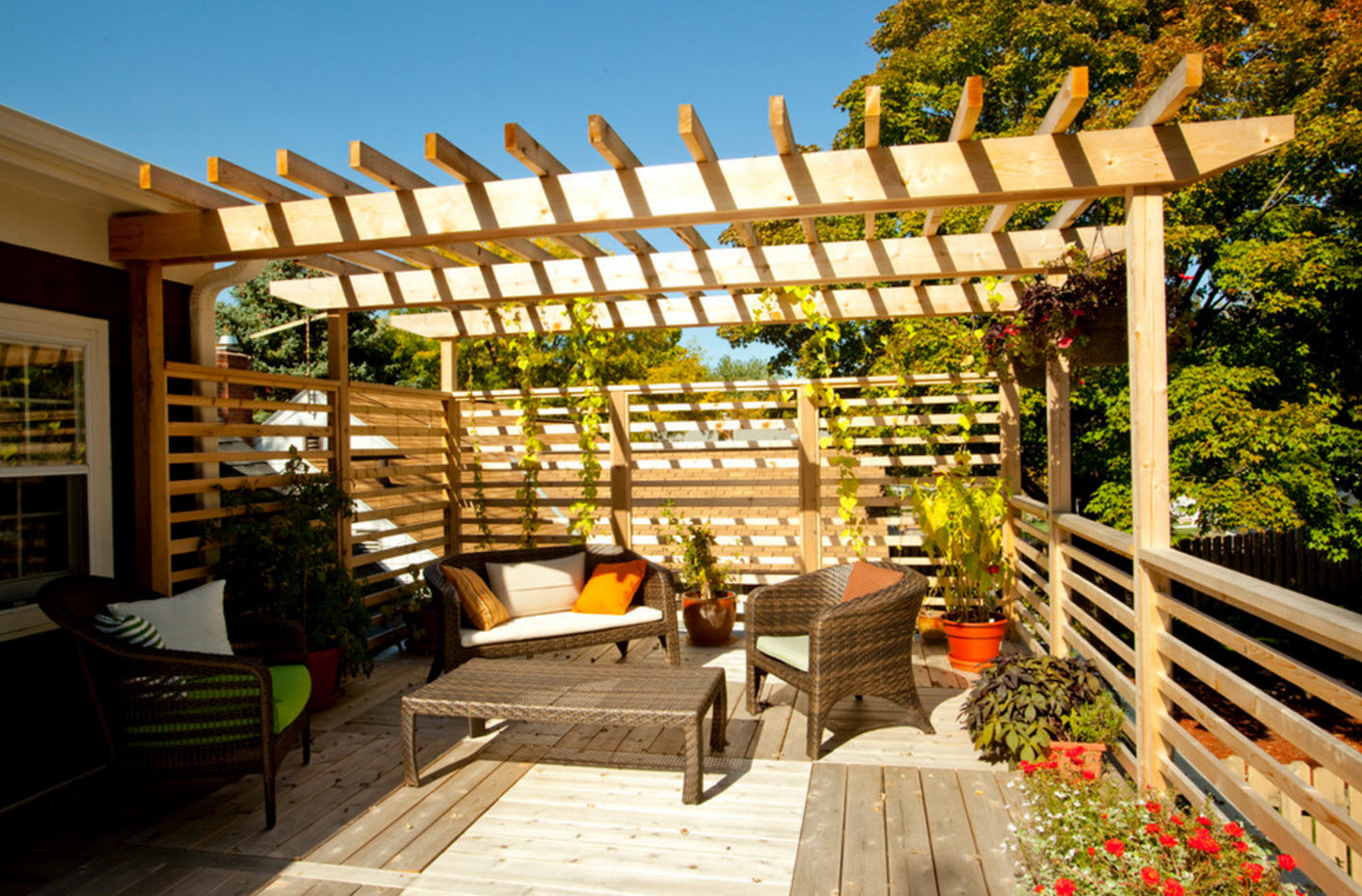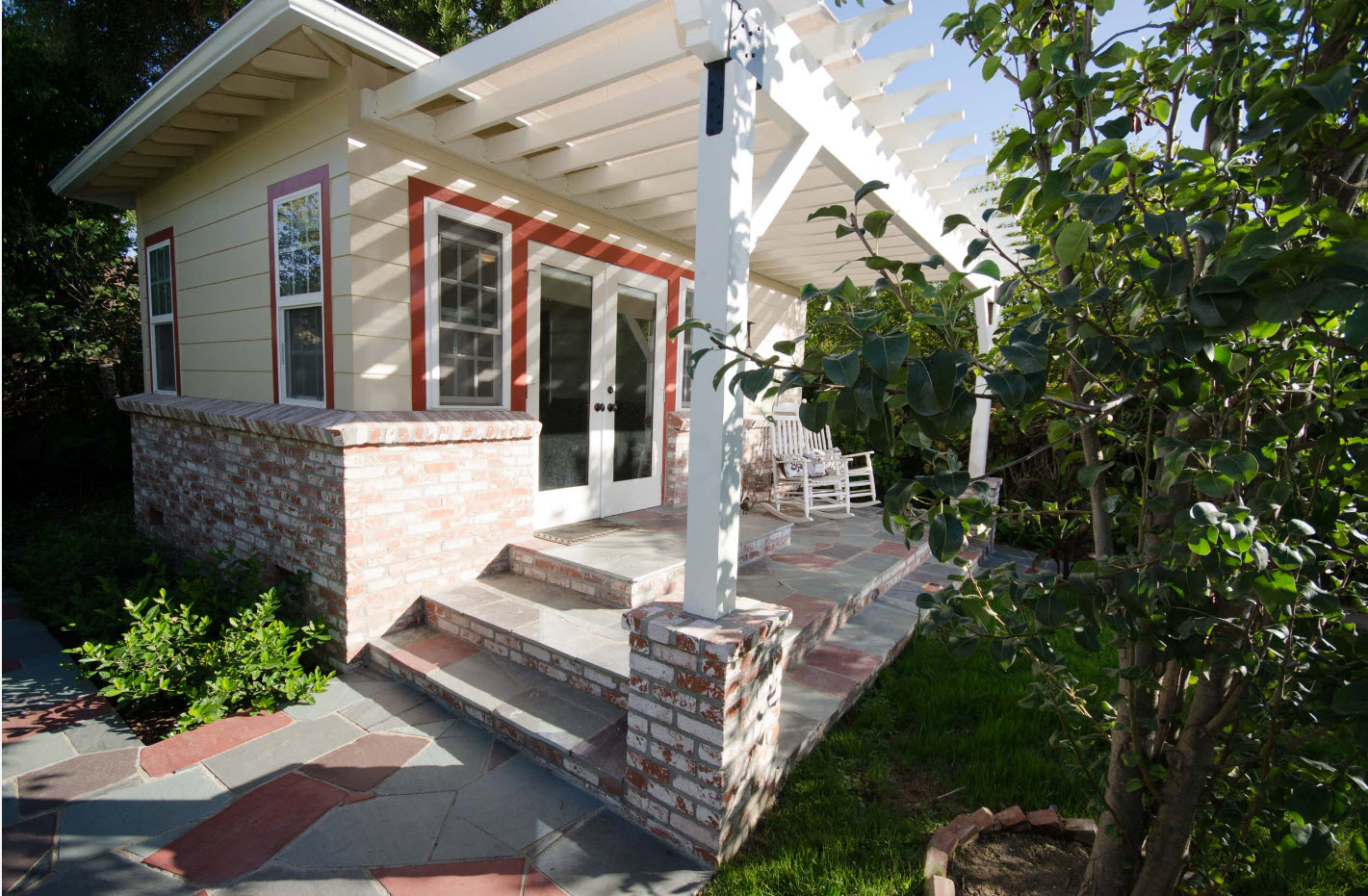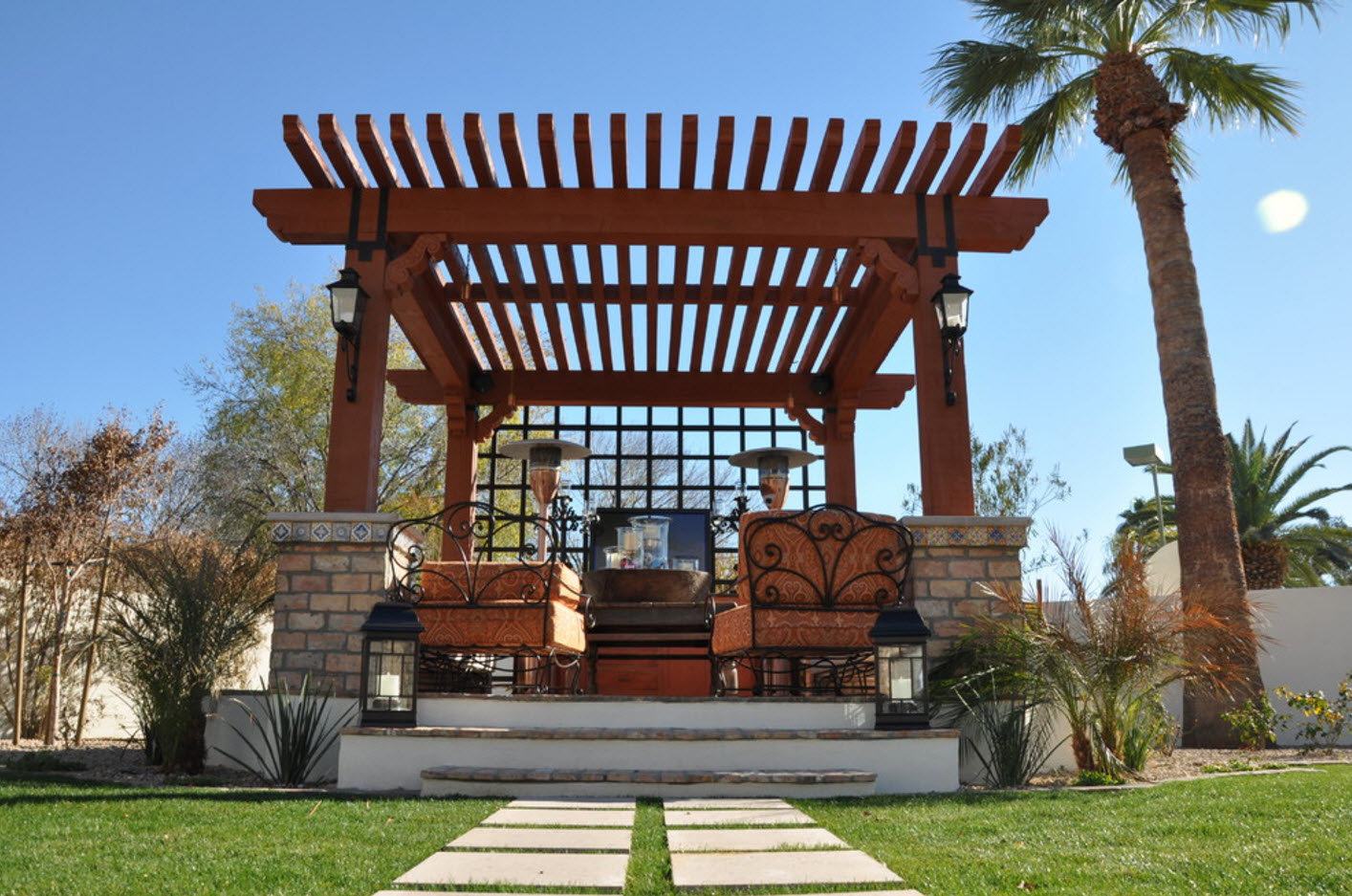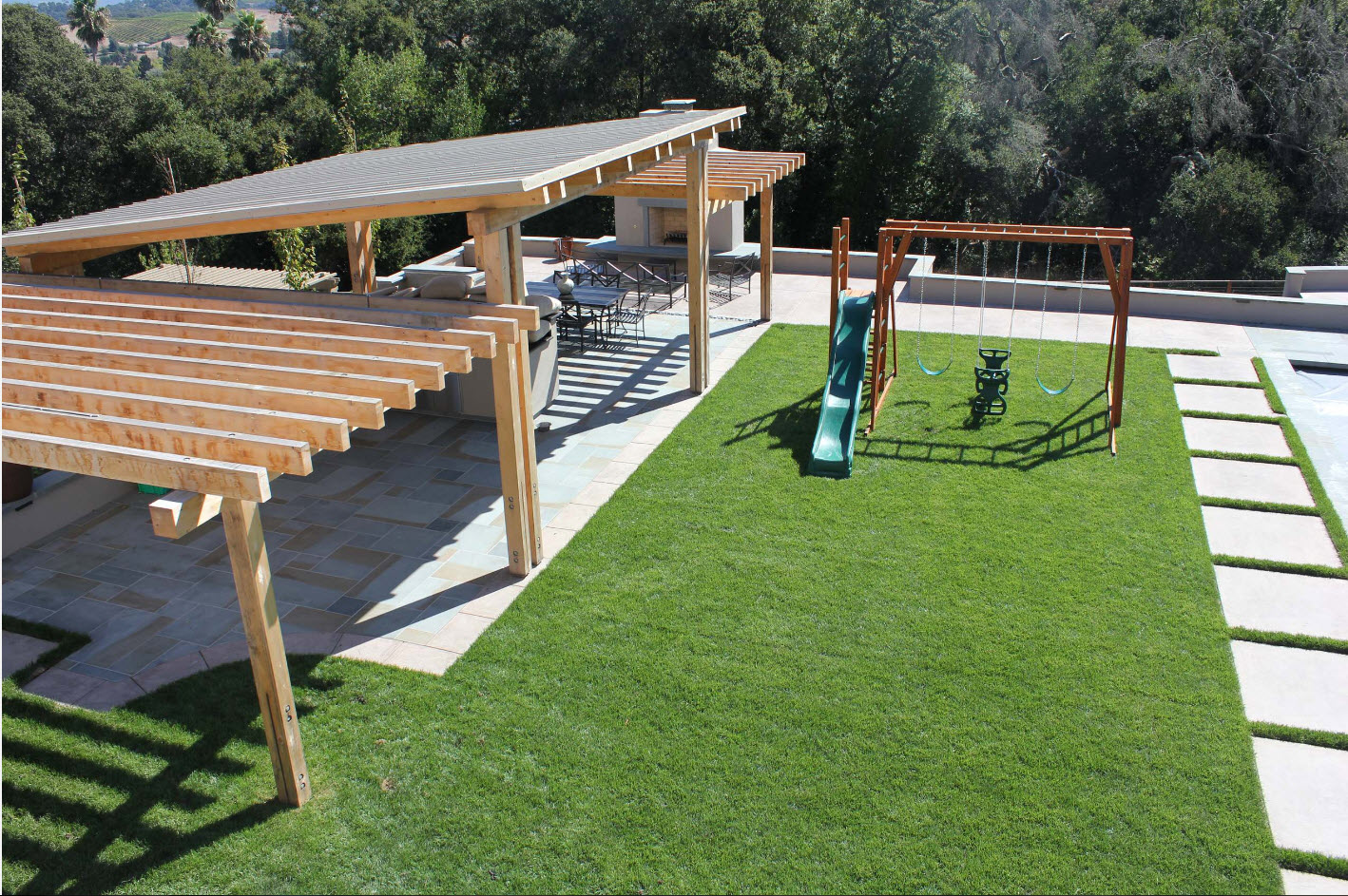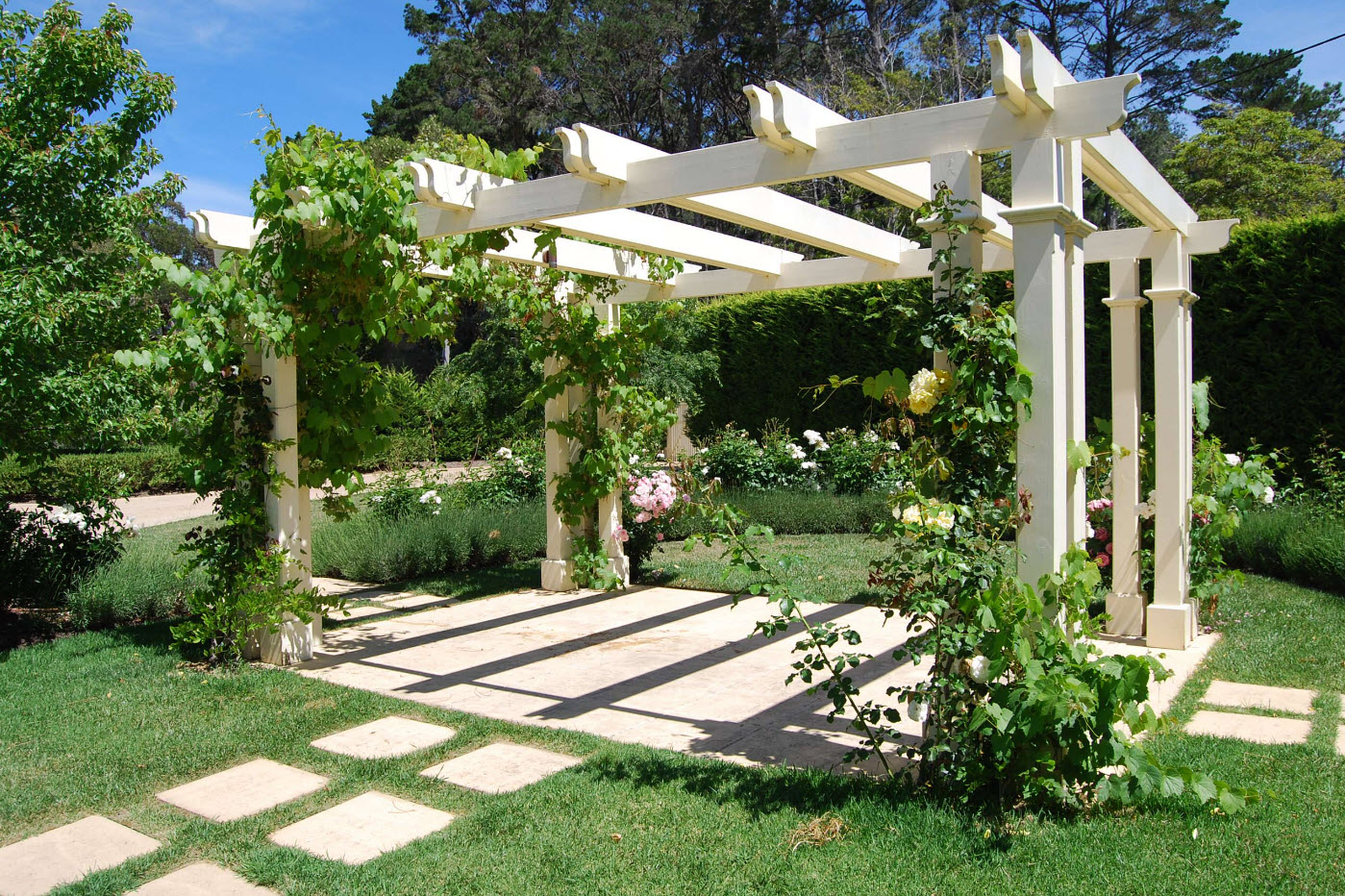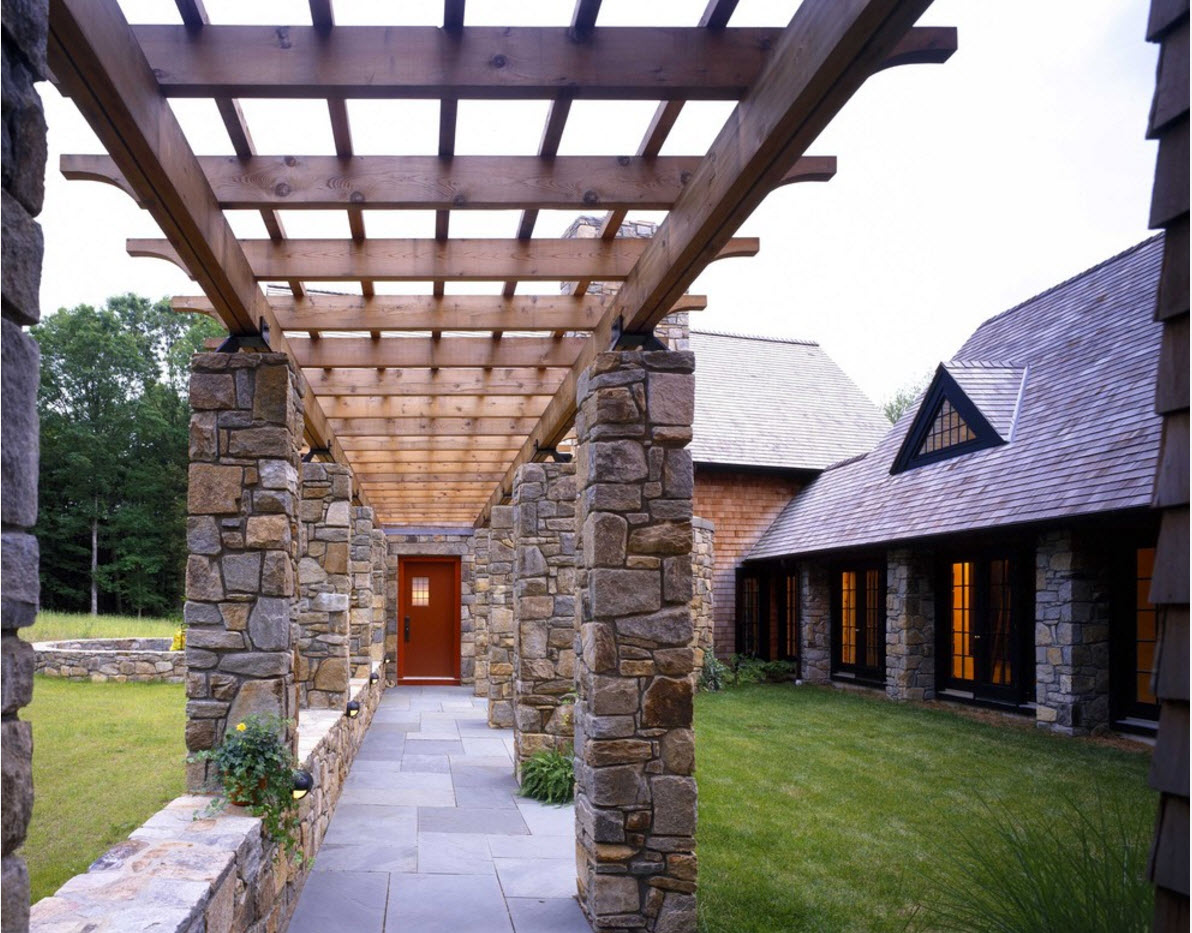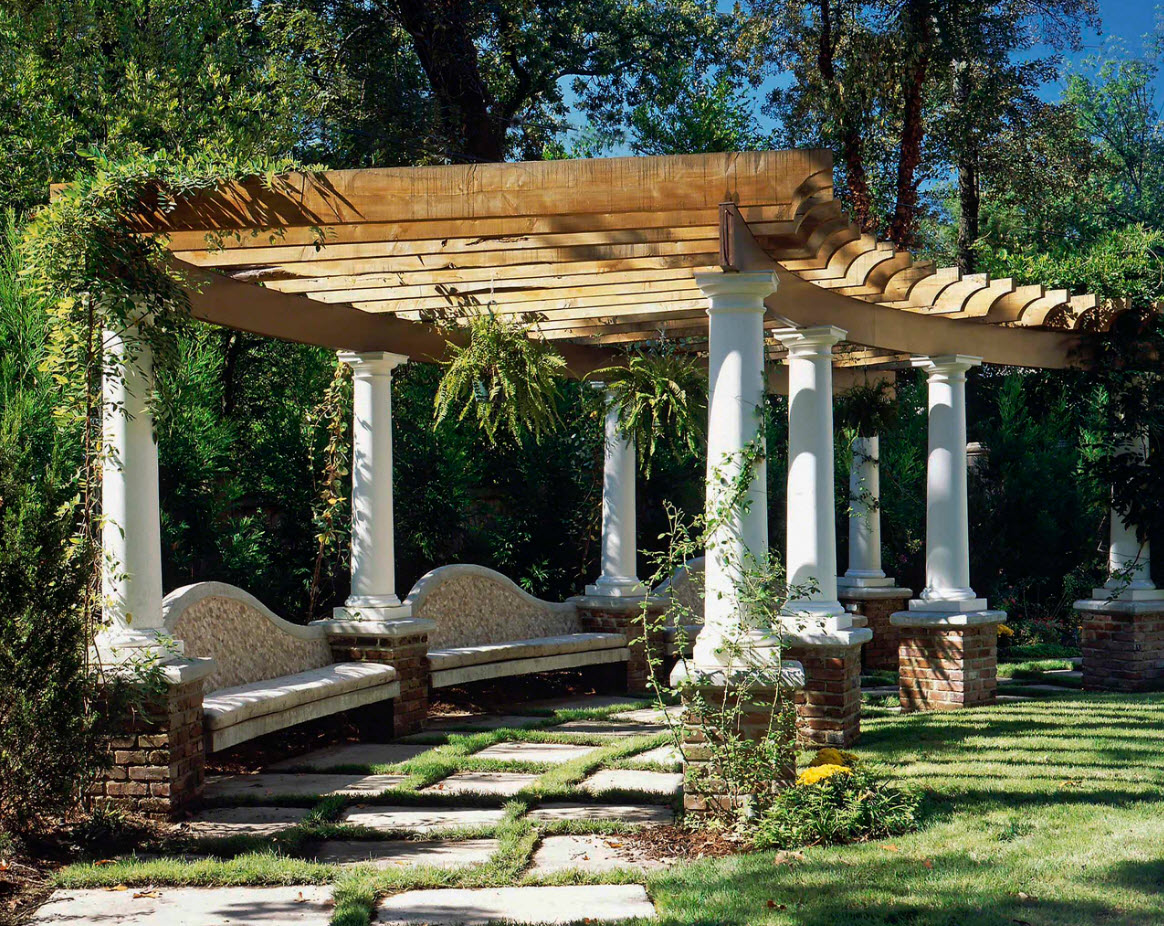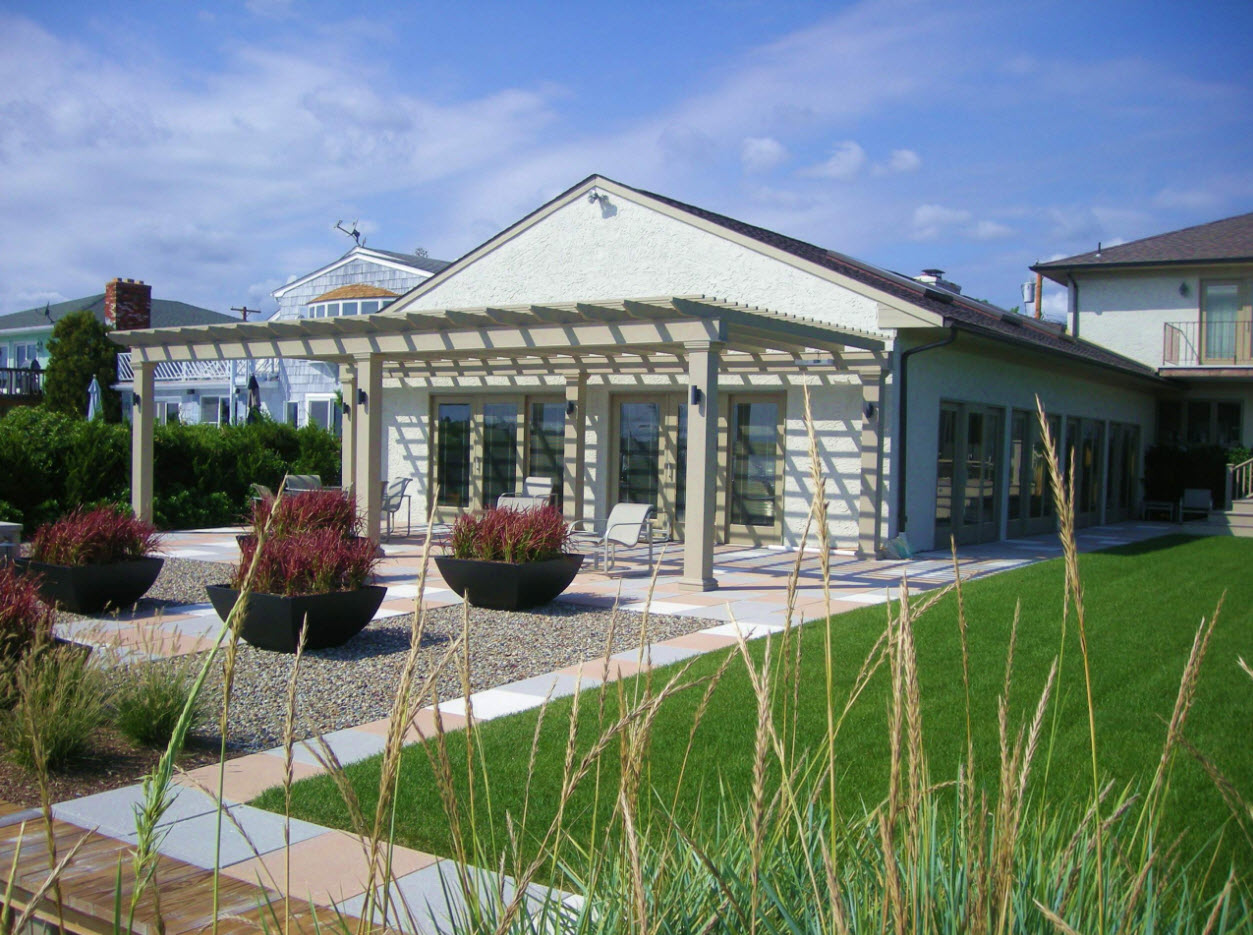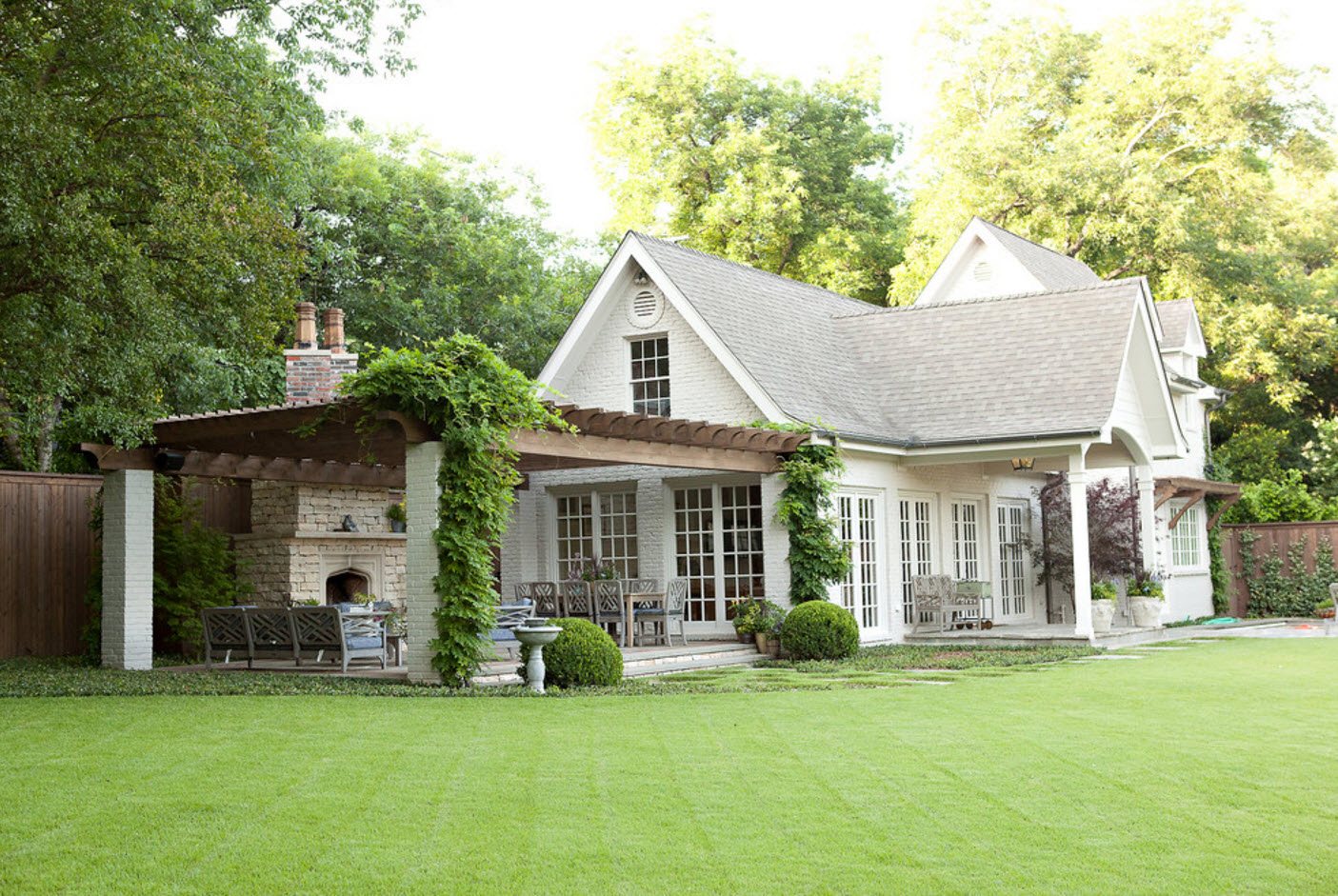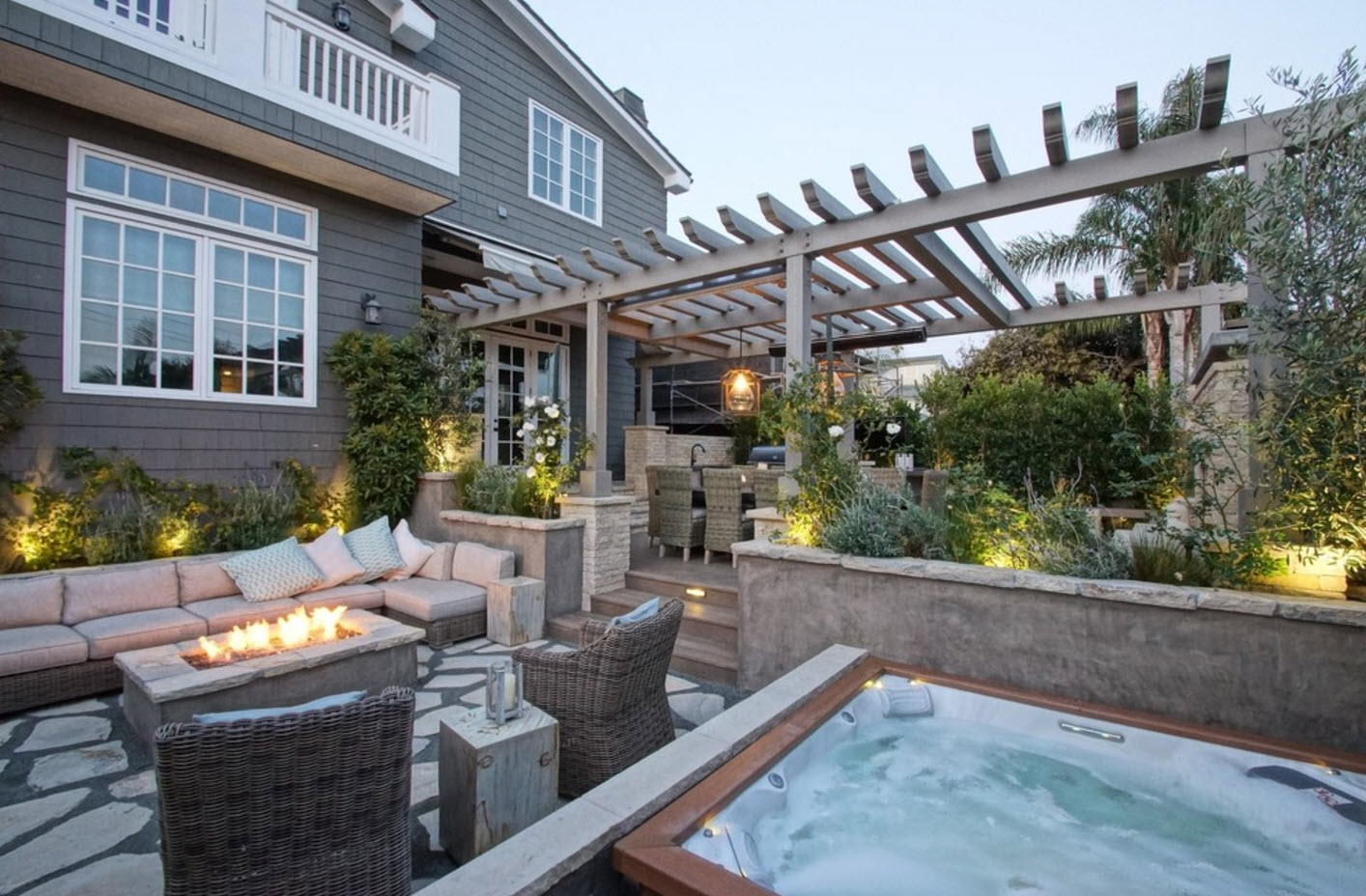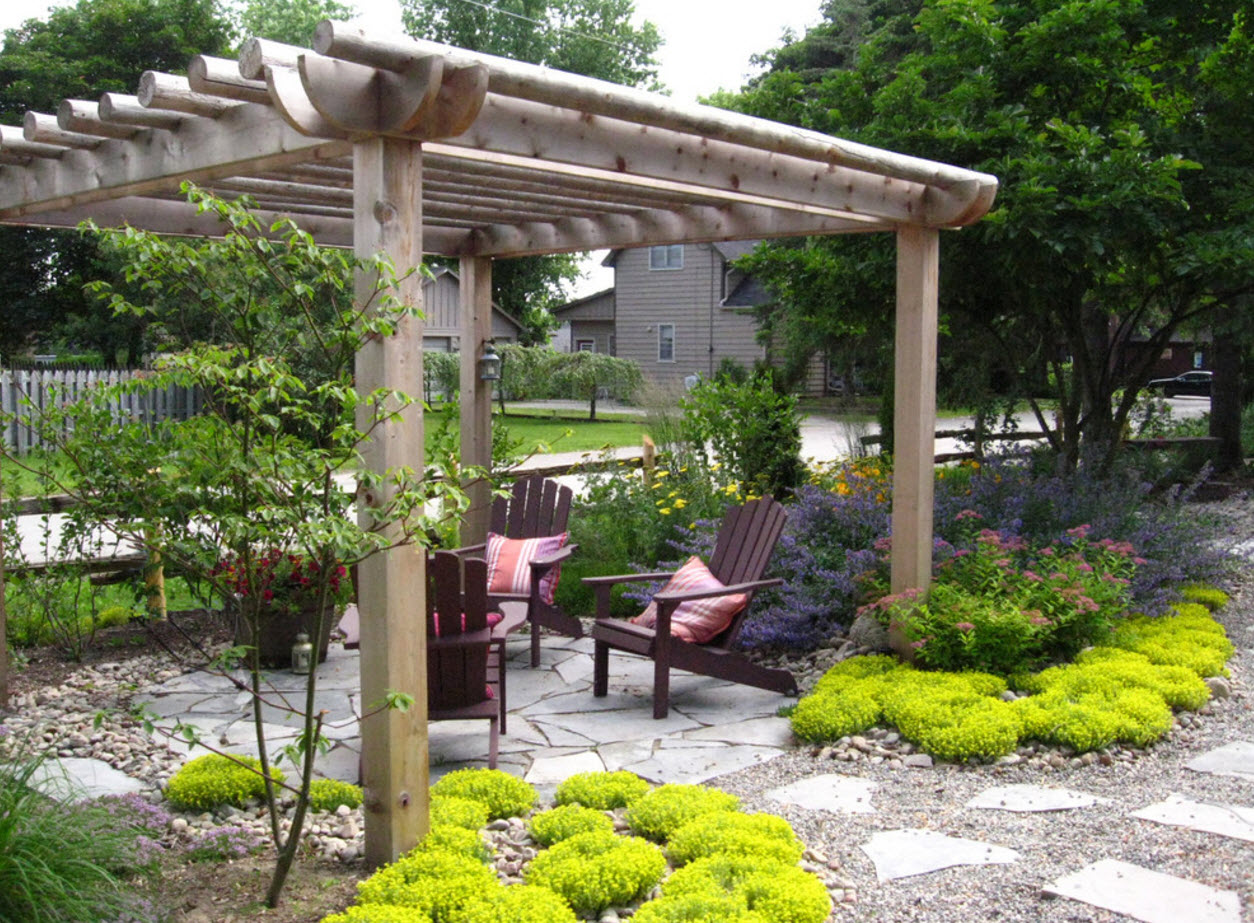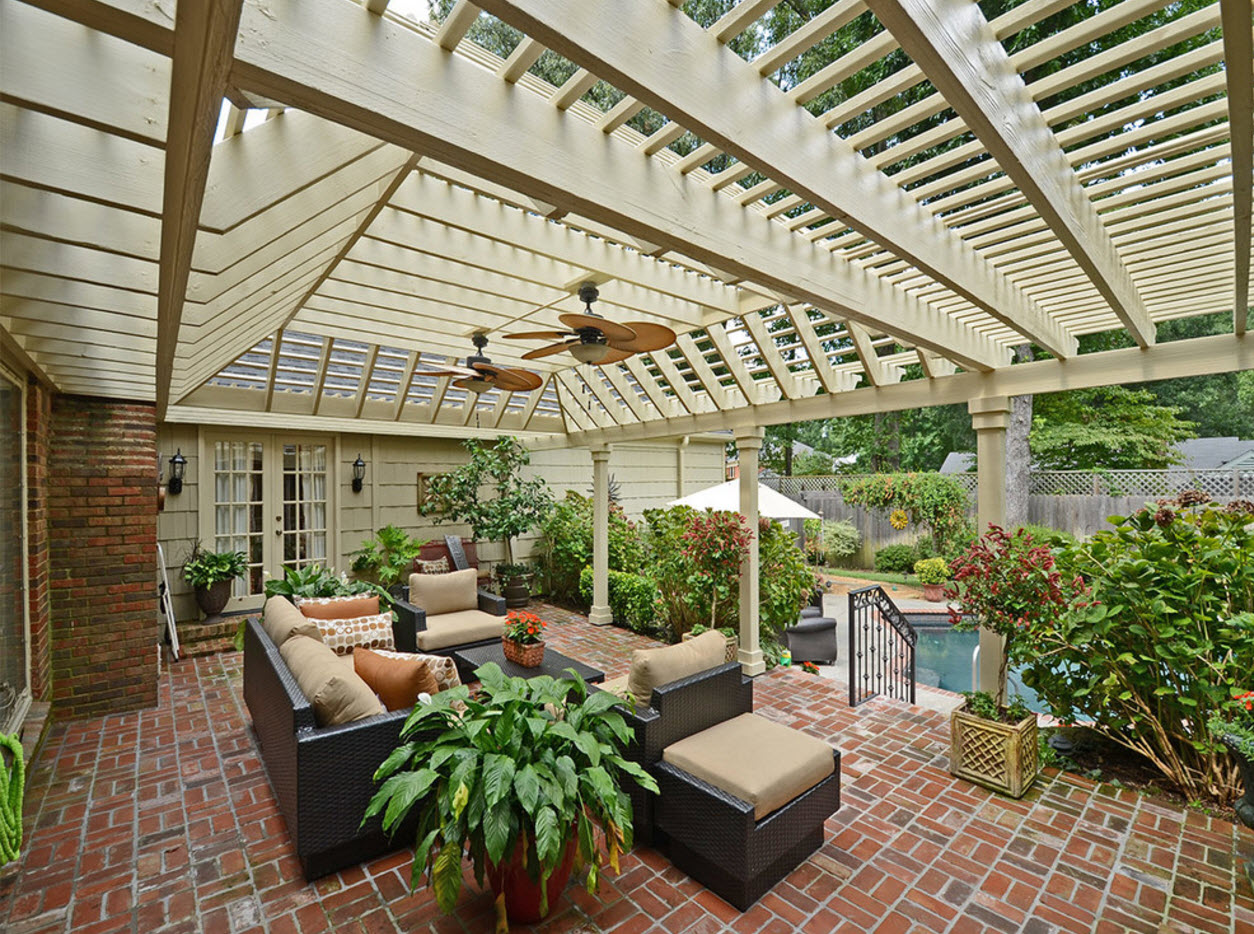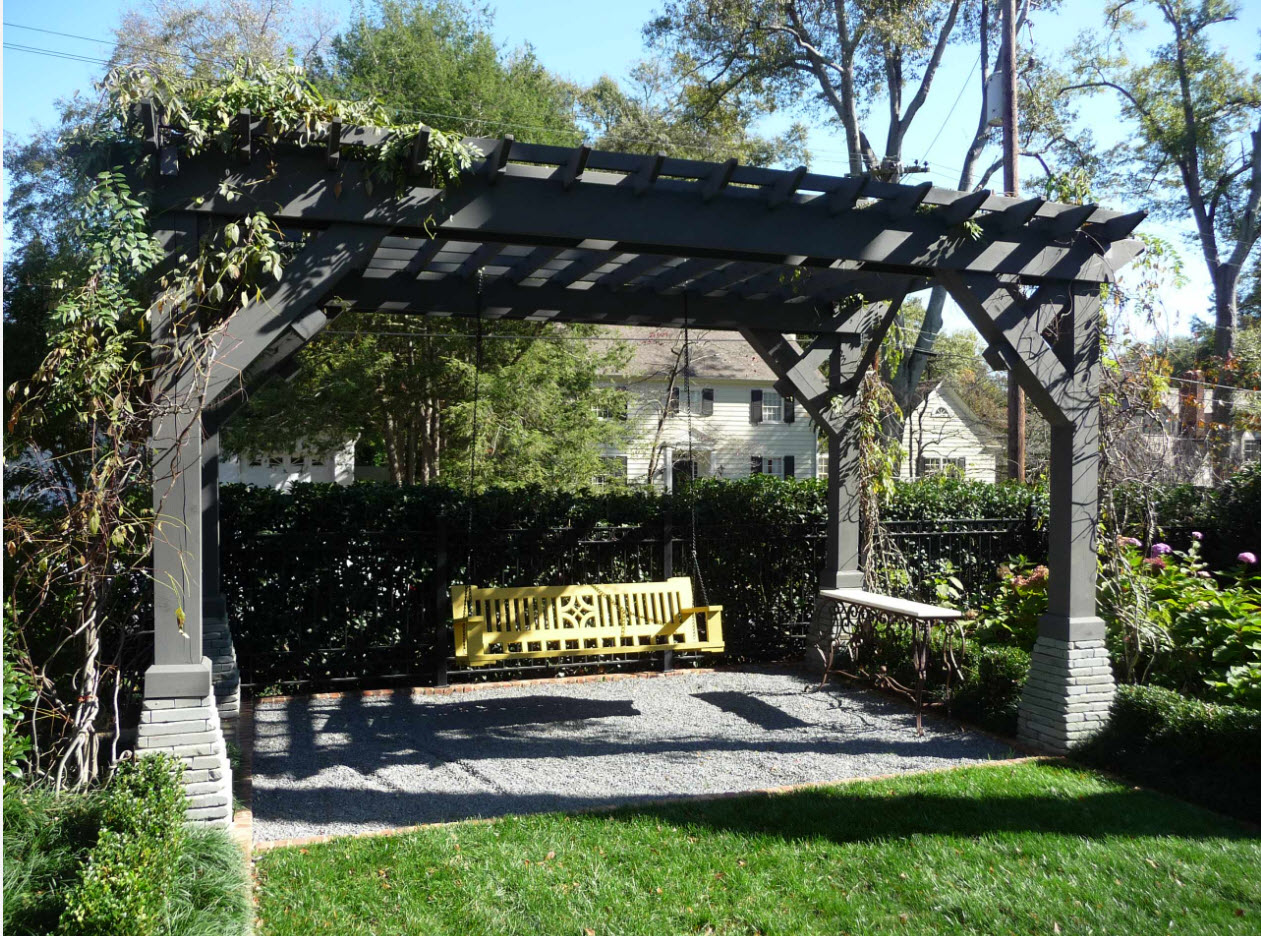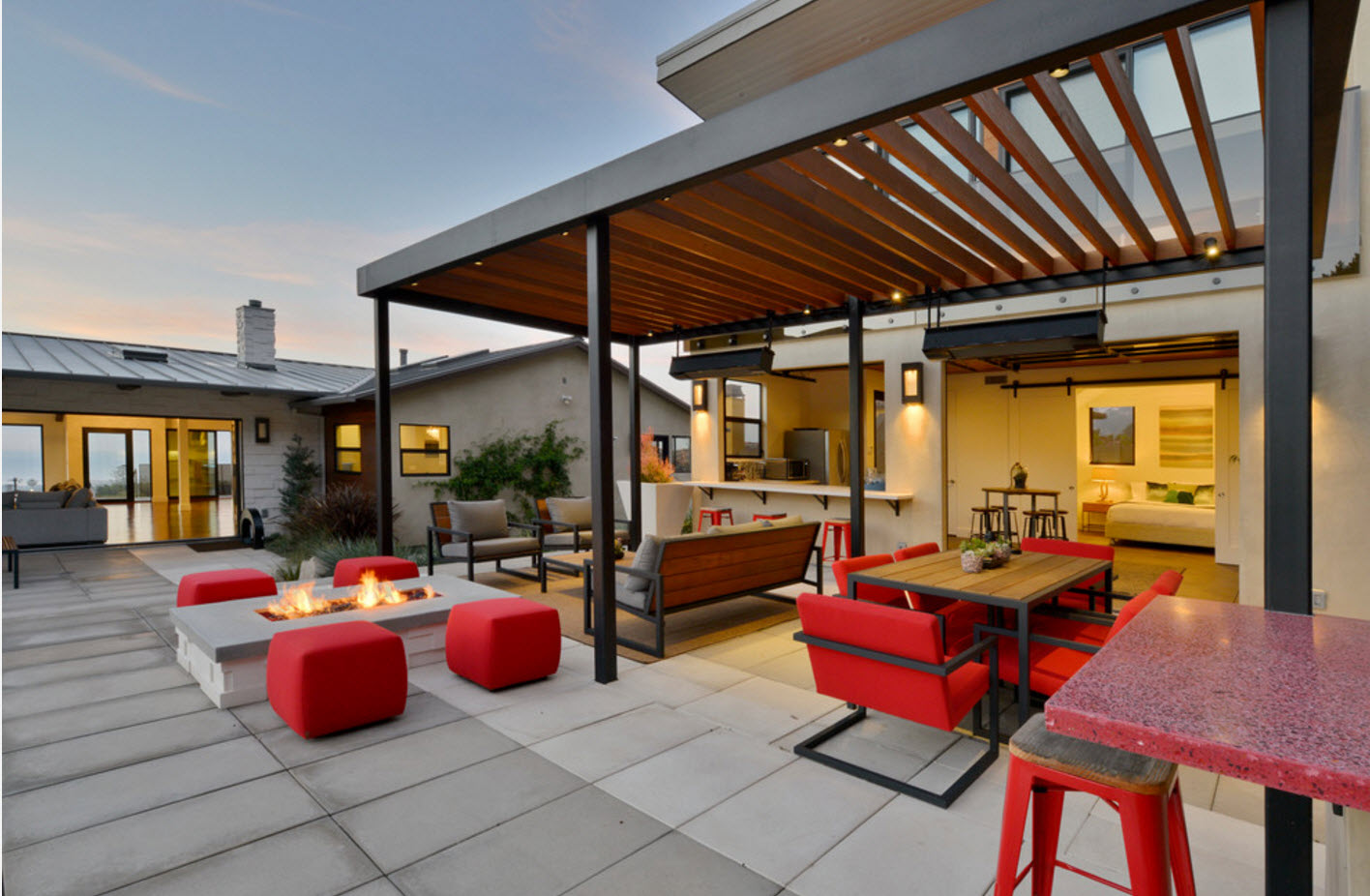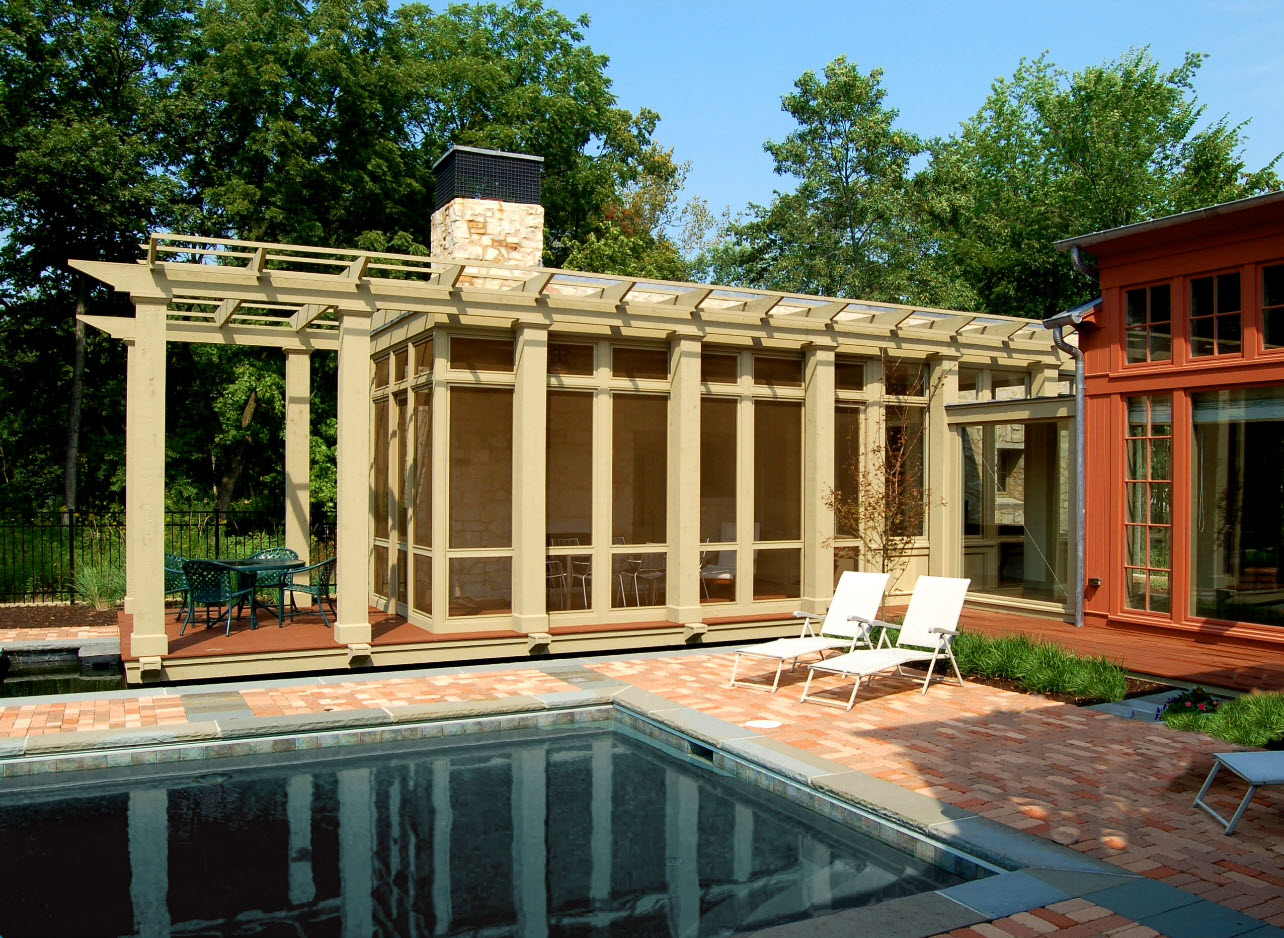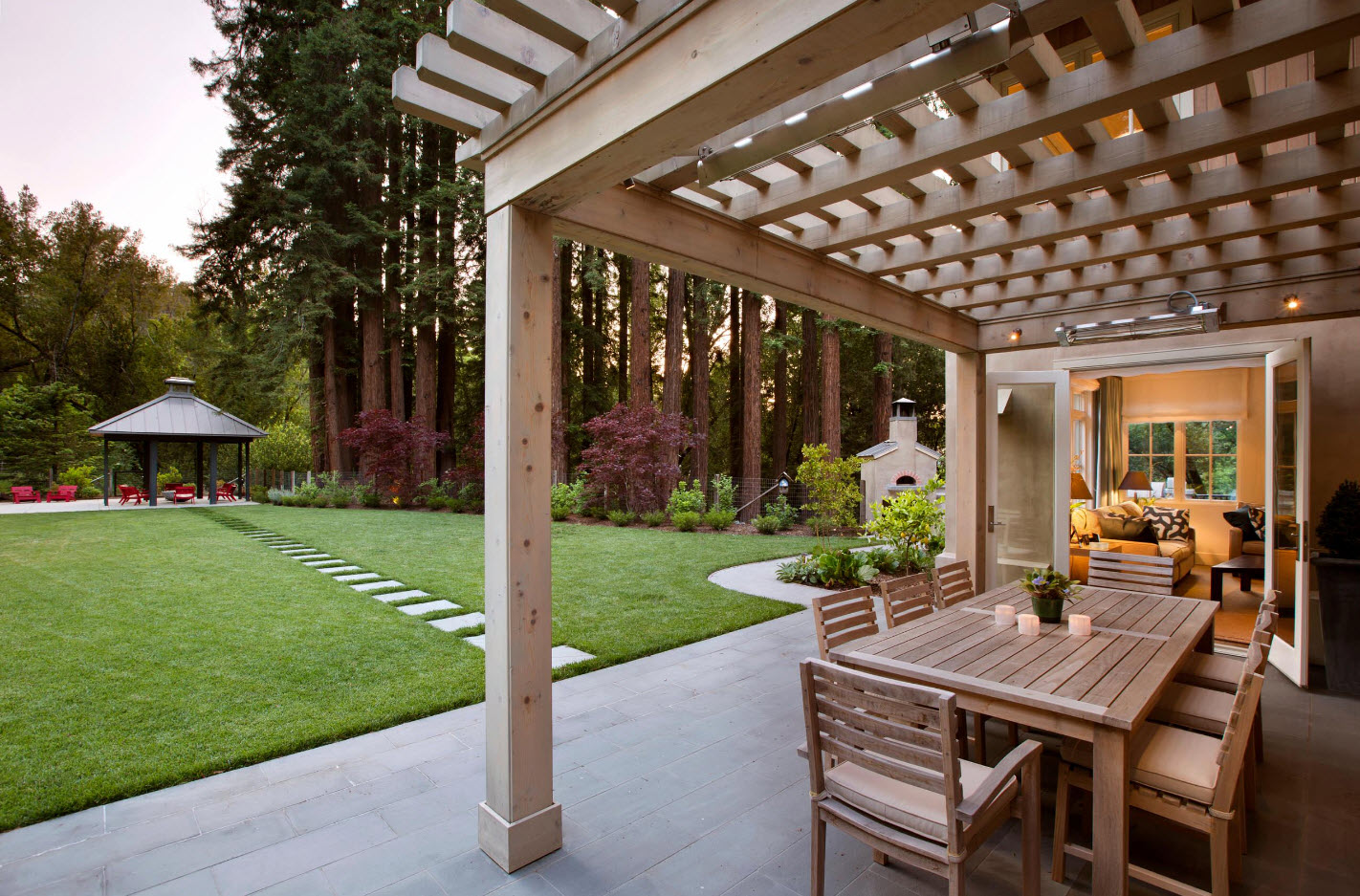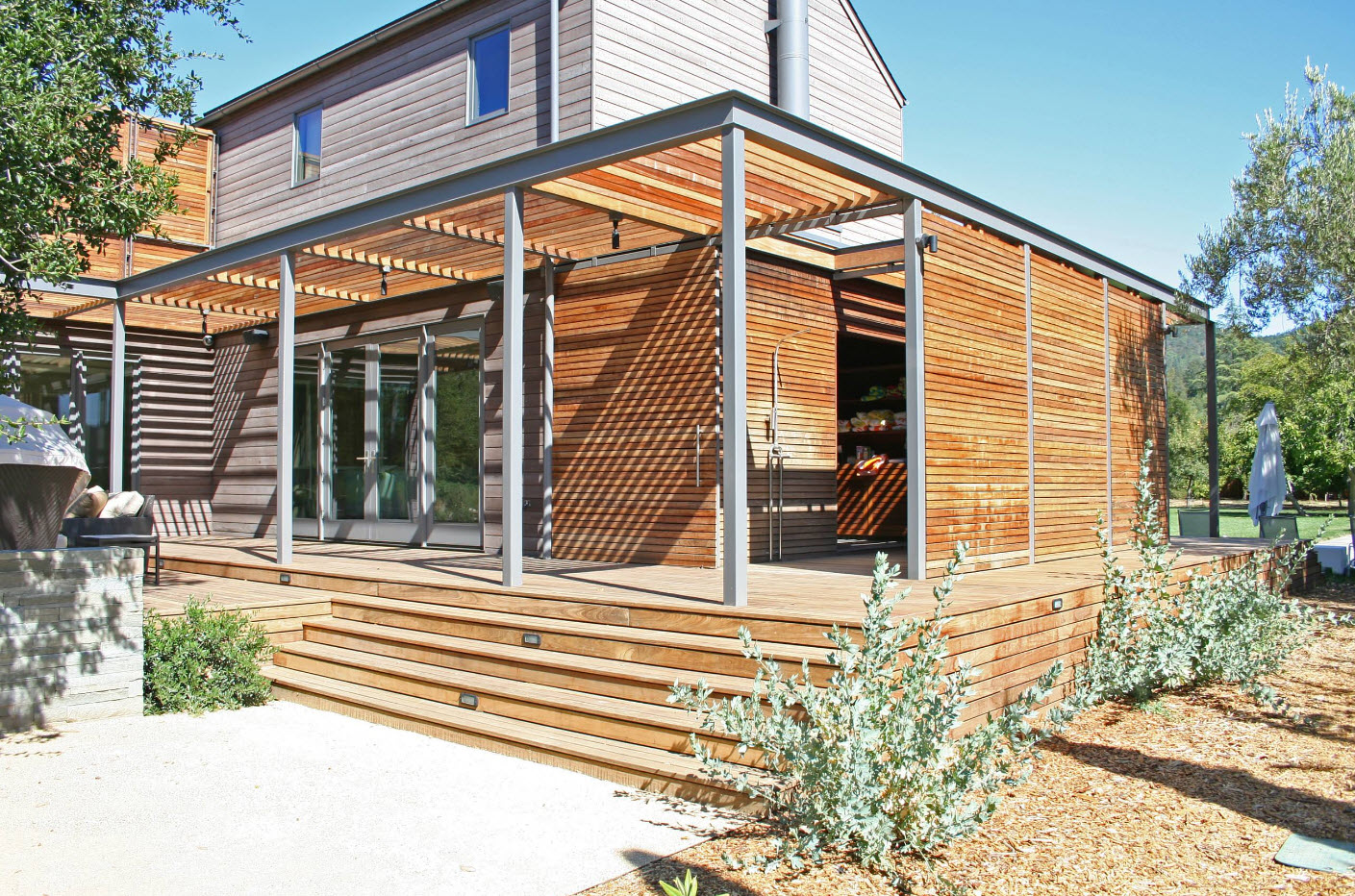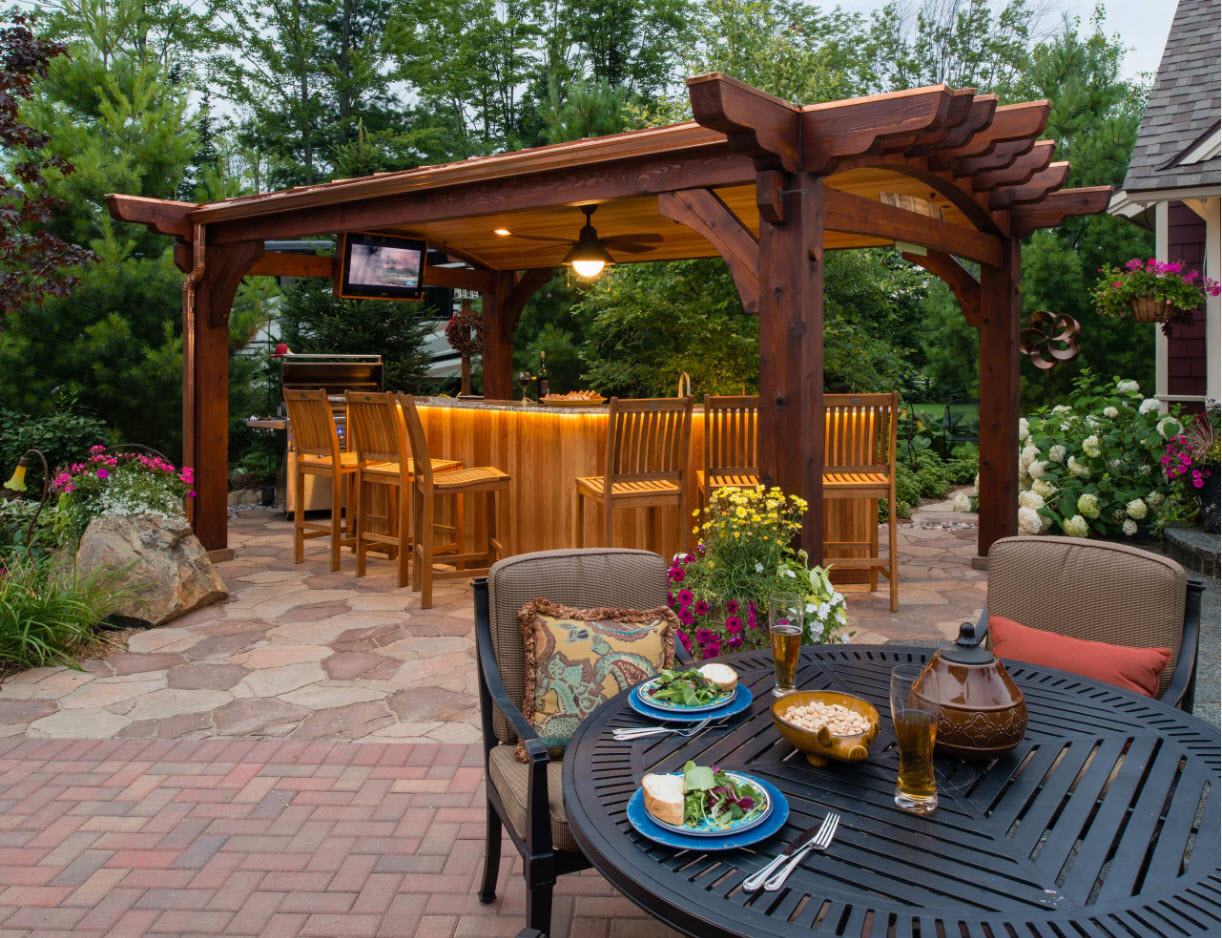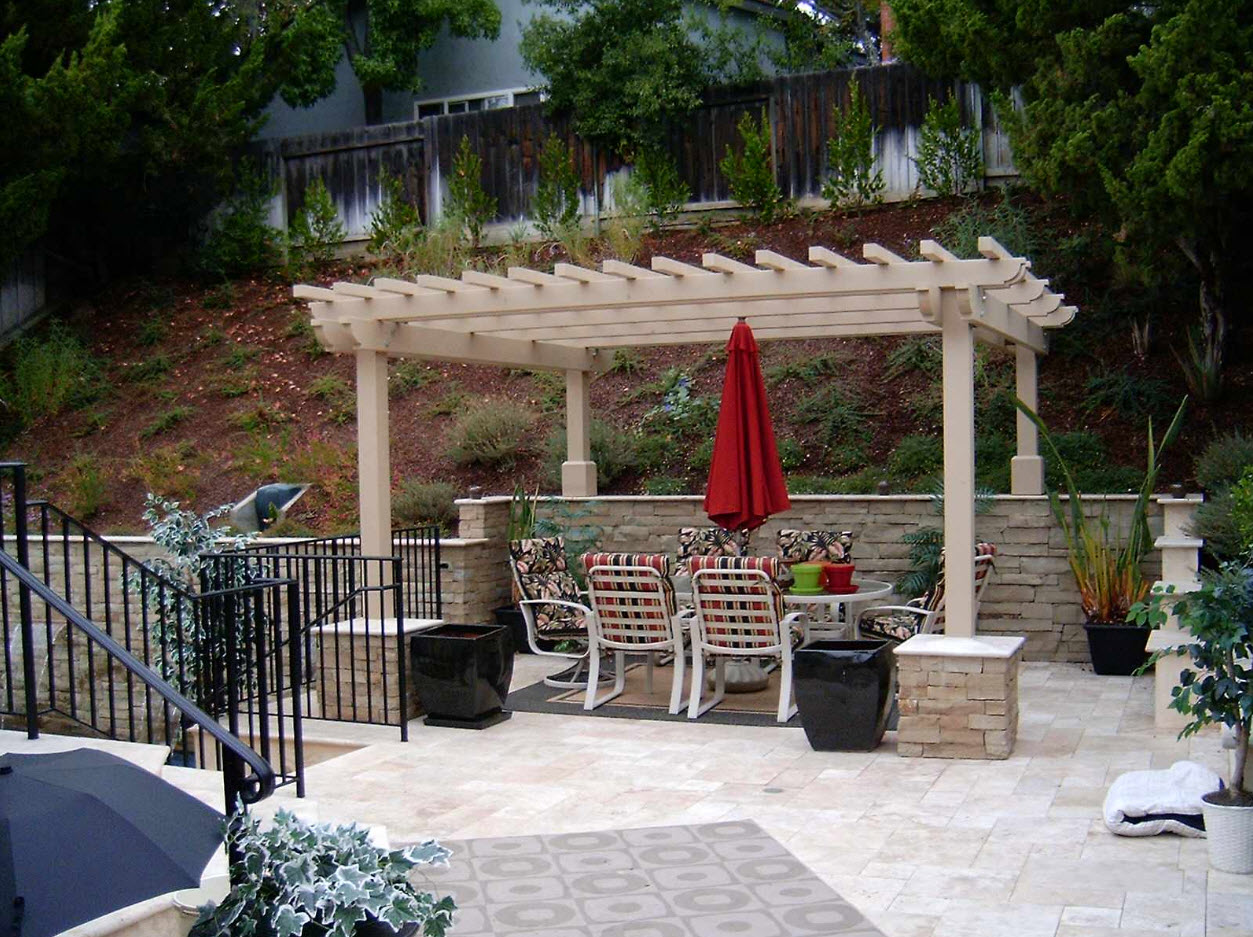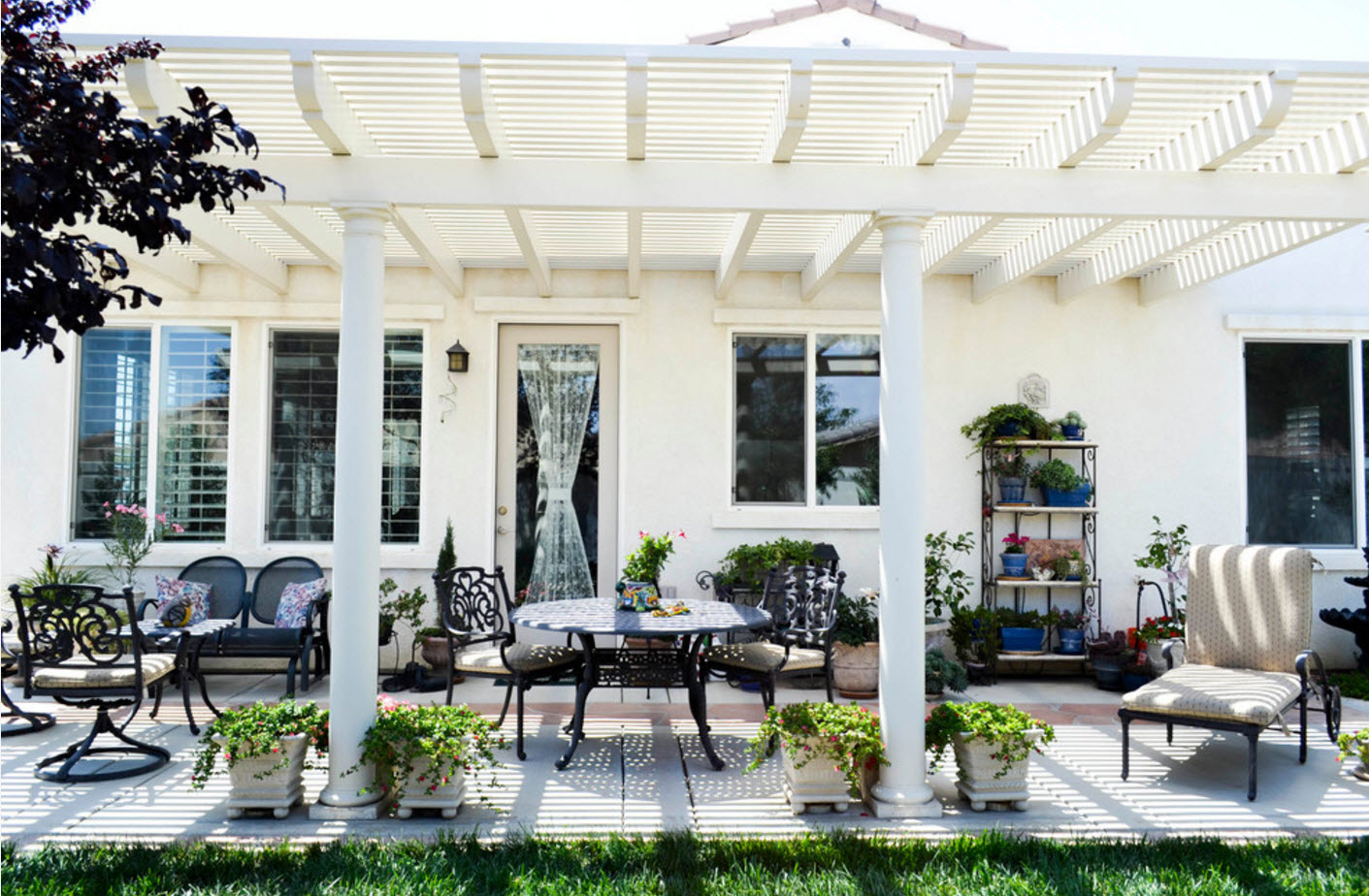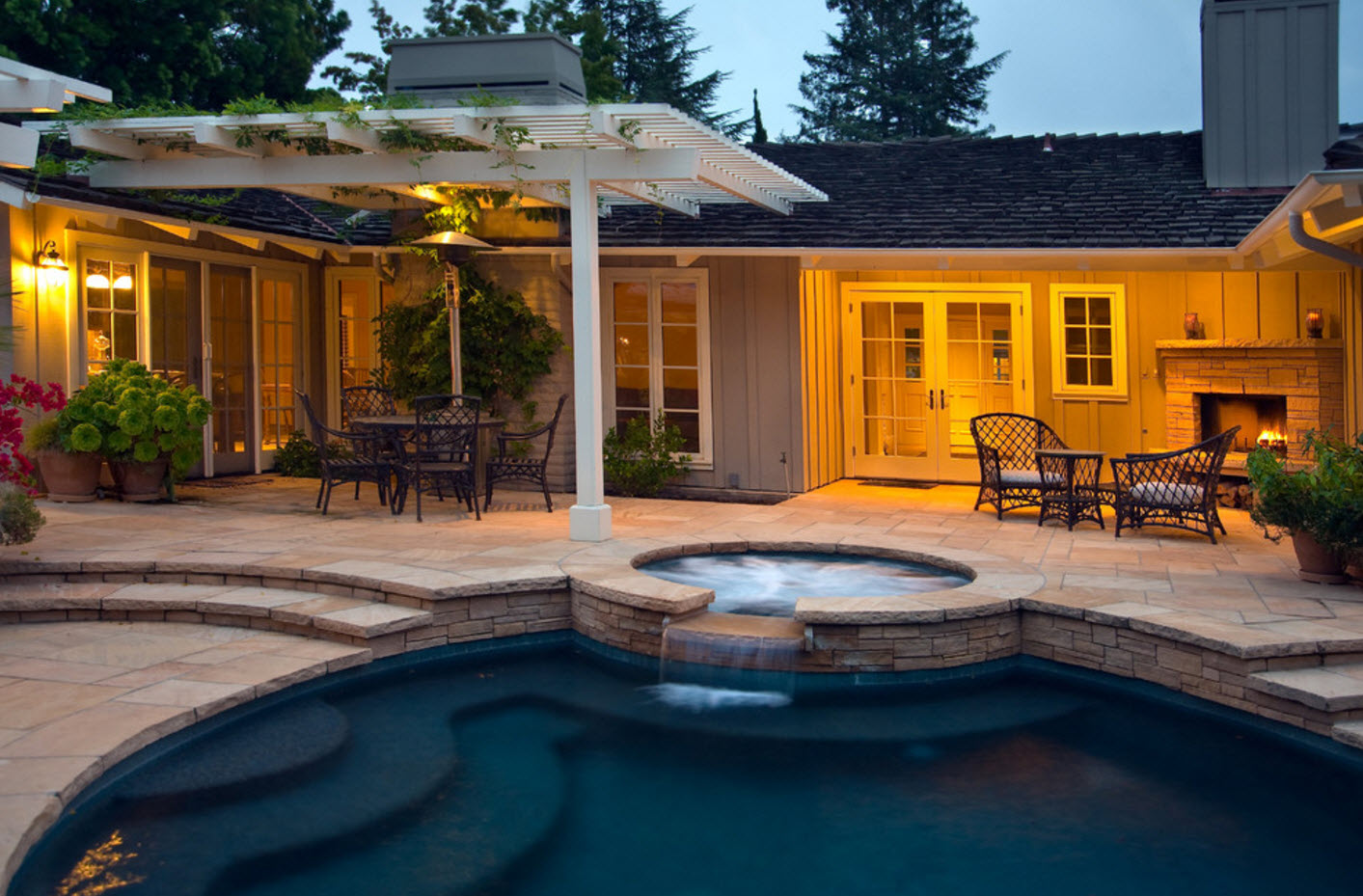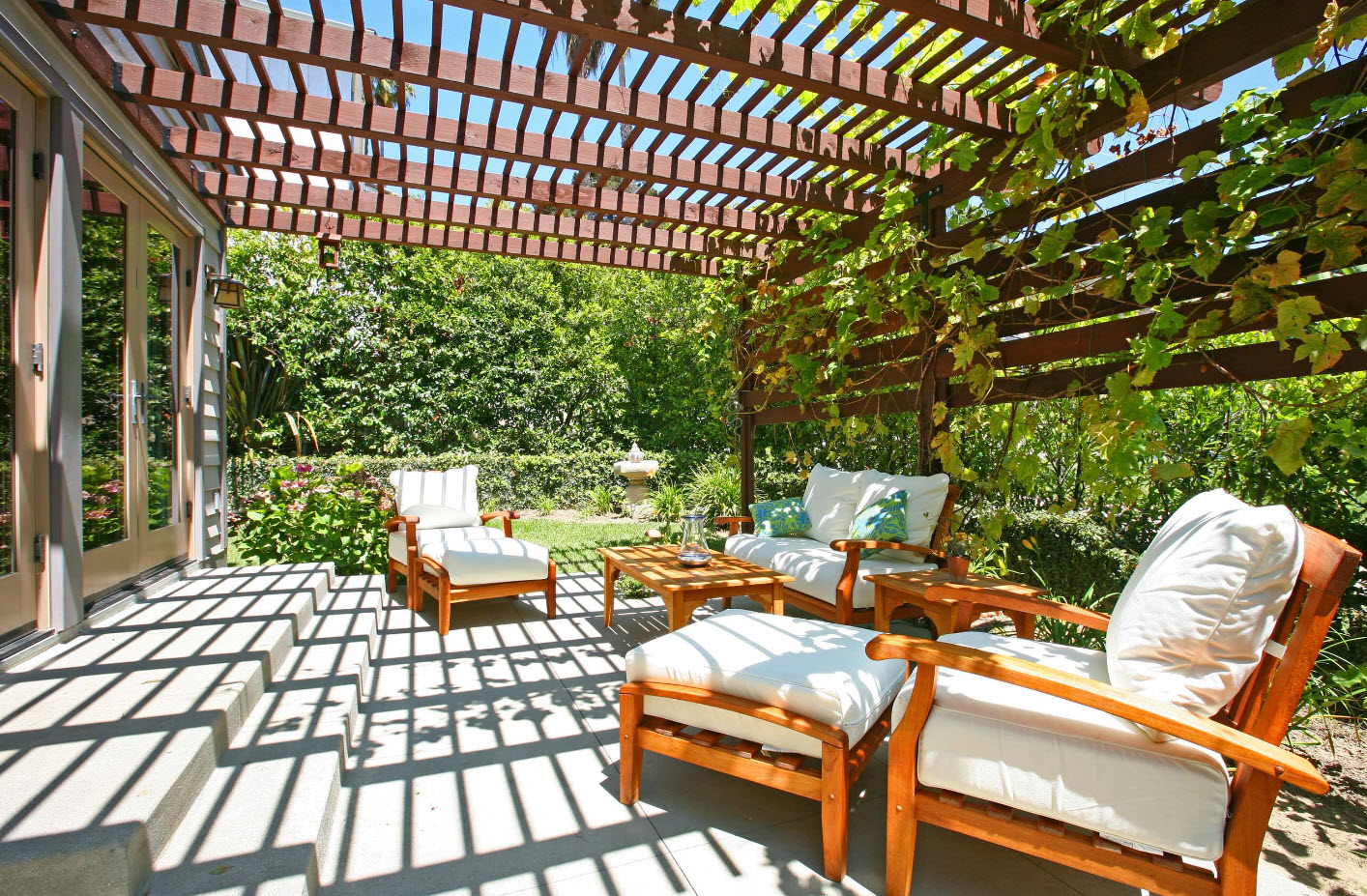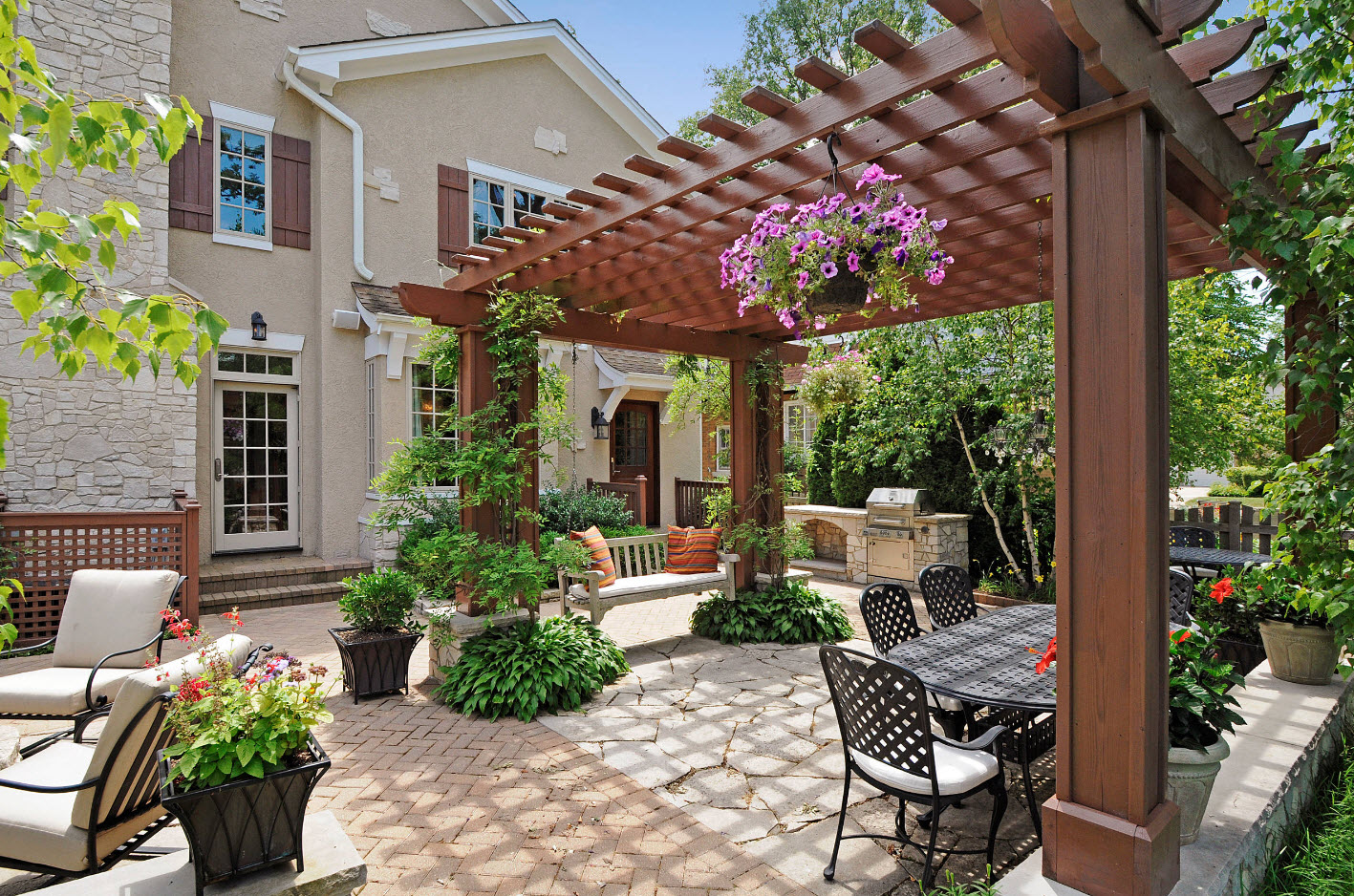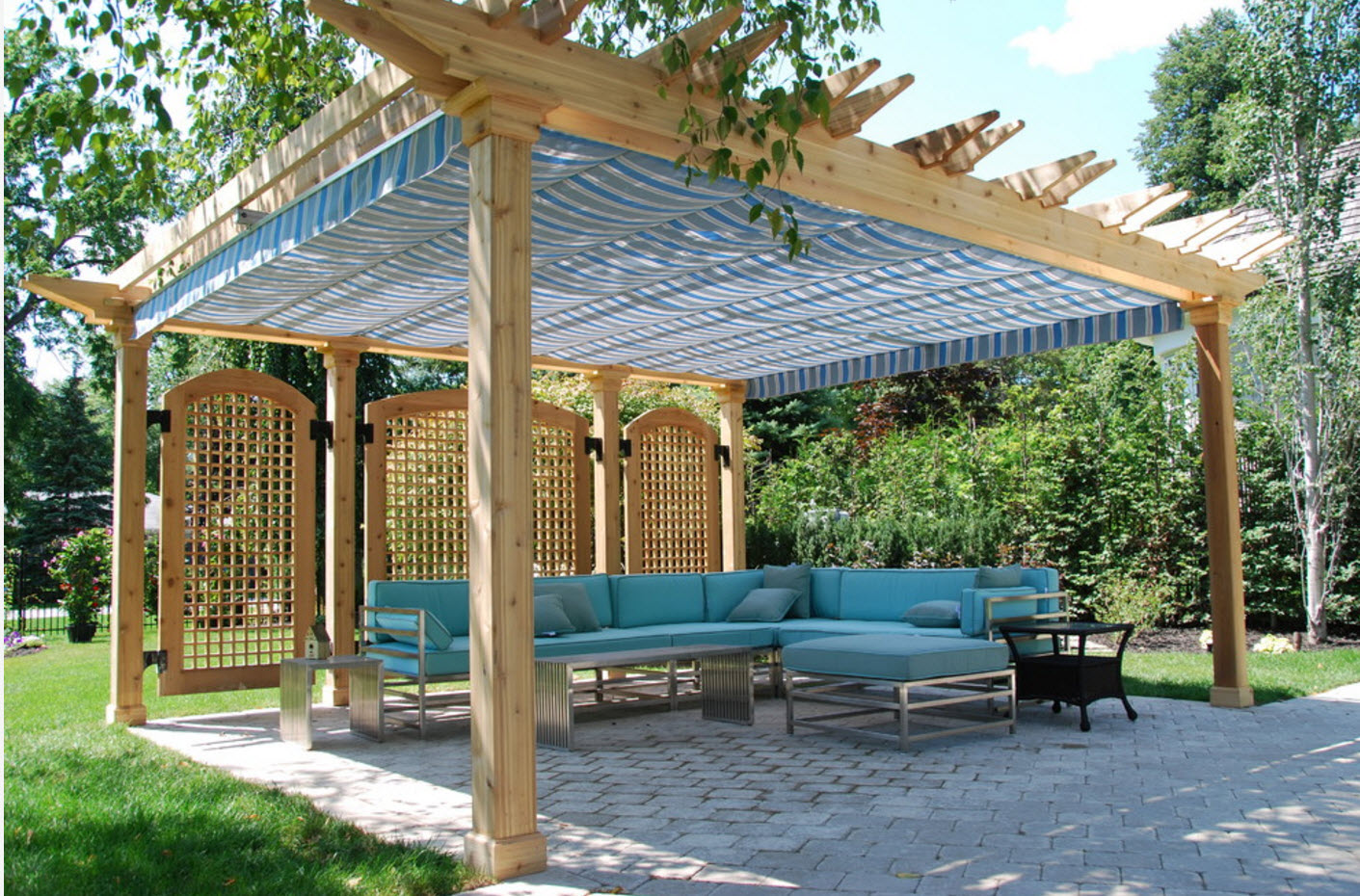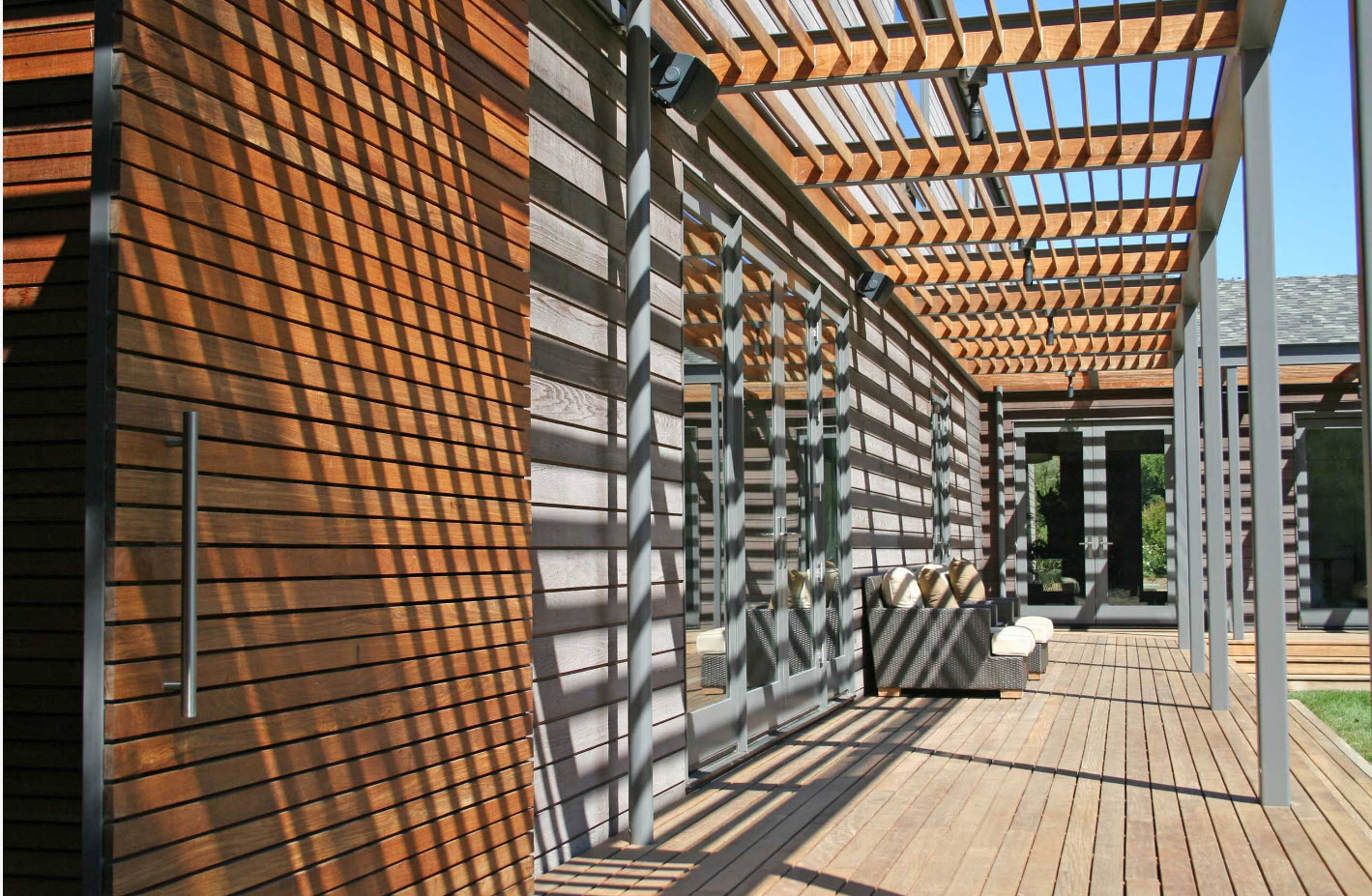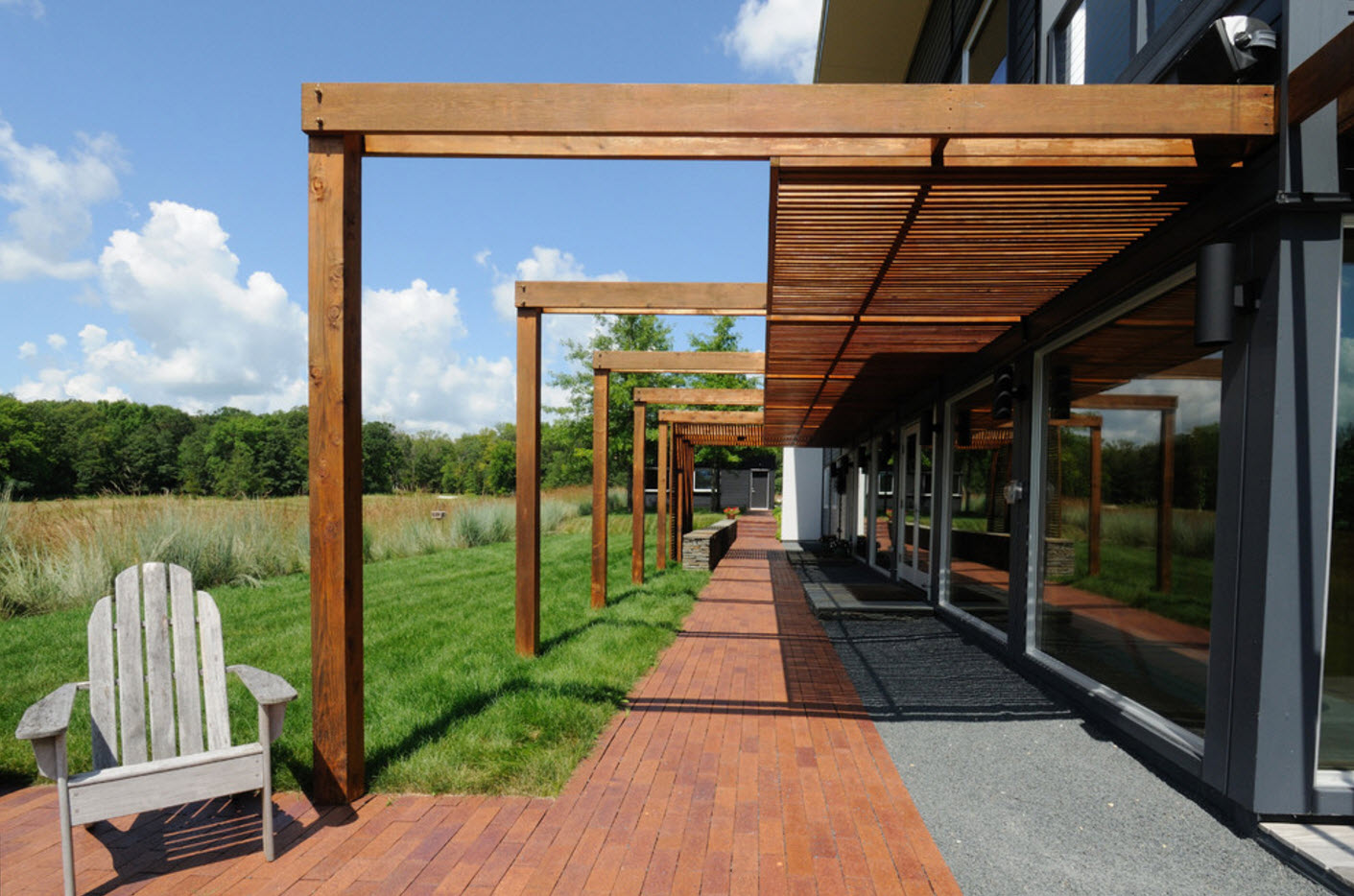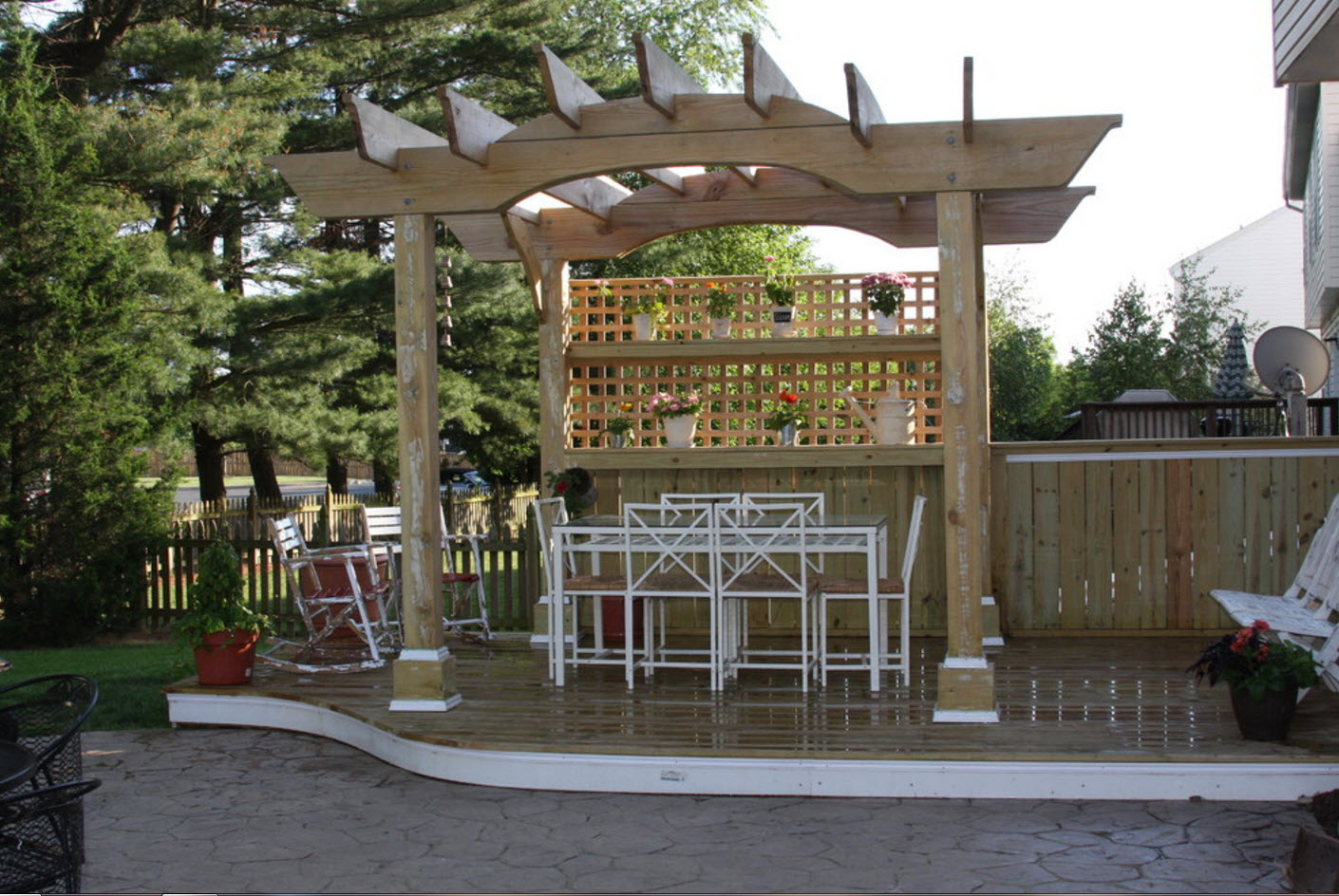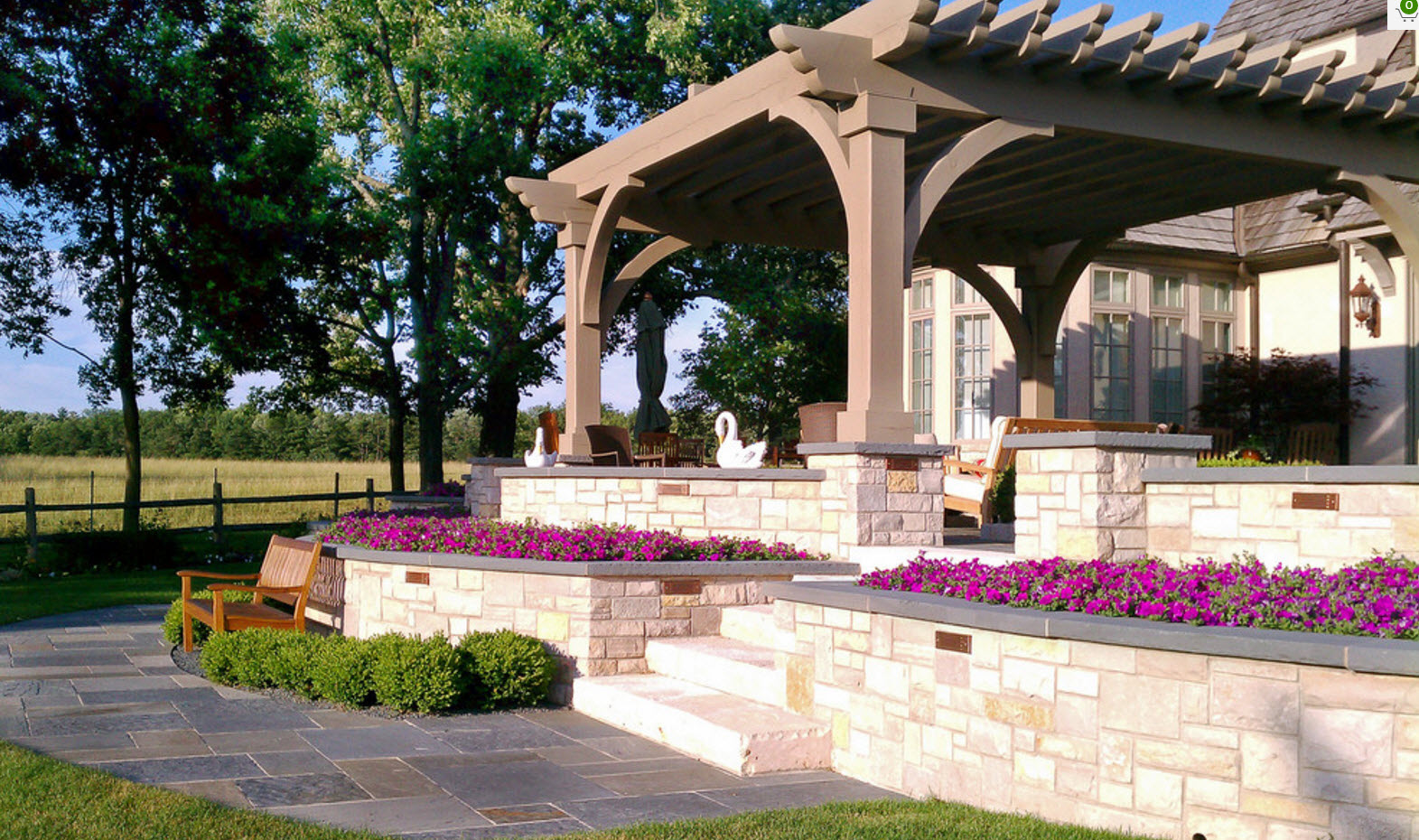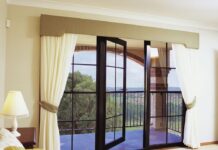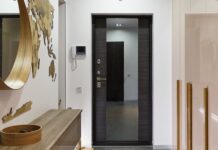In the field of landscape design, as well as in many sectors of our life, changes are constantly taking place, new trends, preferences and fashion trends are emerging. It is not surprising that most owners of private houses, summer cottages and household plots try to arrange their land holdings with maximum convenience, comfort and aesthetics. In this publication, we will consider such an element of landscape design as a pergola. Initially, the pergola was used as a support for the distribution of climbing plants, most often grapes. Nowadays, this arched structure made of wood (metal, stone and even plastic) is also used as a canopy, gazebo, canopy over the front door and just a decorative element of the local area.
What and how the pergola is made
The following materials can be used in the manufacture of pergolas:
- wood of various species;
- metal;
- stone;
- plastic and metal-plastic;
- combination of materials.
The undisputed leader among the materials for the execution of such elements of landscape design as pergola is considered to be wood. Not only naturalness, flexibility and availability of raw materials have become the main reasons for the use of natural material, but also the high aesthetic qualities of finished products. Wood structures can be easily combined with any elements of landscape design, buildings, plantings. In addition, wood is perfectly combined with other types of raw materials for the manufacture of original pergolas. For example, the bases of the pergola can be made of stone (in the form of columns), and the crossbars can be made of wood. Or the structure may have wooden supports and a metal lattice as ceilings.
If the pergola is designed to support climbing plants, then, on the one hand, the design should look easy, but on the other hand, it should be strong enough, stable and reliable, because the branches of some plants weigh several kilograms.
Pergola – a variety of designs
Pergolas are distinguished not only by the type of material used for construction, but also by the very type of construction:
- pergola – awning. This type of structure is most similar to a canopy, only instead of a solid roof – a row of slats, beams or a lattice. This design can protect from the sun, but not from rain. It is installed as a free-standing structure, and can be adjacent to a larger structure – a house, a summer kitchen, a veranda, a bathhouse;
- pergola-screen. Used to create a shaded place for privacy. The structure can be used as a zoning element;
- pergola-visor. From the southern countries, this trend came to us – a device that helps to create a shadow near the windows of the south side of the building;
- pergola-corridor. As a rule, the design is used to create a green tunnel – climbing plants create an excellent shade, relying on the elements of the pergola.
All designs of pergolas can be divided into two large groups:
- separate structures (standing separately from buildings);
- adjacent to buildings (most often they are part of a house, veranda or other buildings).
When choosing a pergola design, it is important to correctly determine the size. Too large a structure on a small summer cottage or personal plot will look ridiculous, too high – to create little shade, and too small may not withstand the weight of climbing plants. But it all depends not only on the size of the land or yard, but also on the scale of other structures involved in the landscape ensemble – from the main building to the swing or alpine slide.
Pergolas can be square and rectangular, arched or with inclined ceilings. The choice of shape depends on your personal preferences and the execution of other elements of landscape design, the size of the pergola itself and the building to which it can adjoin, if it is not a separate structure.
Arched pergolas are more complex and expensive to manufacture, but their appearance compensates for any costs. After all, this is exactly what the first structures of this type of landscape structures originally looked like. Elegant curved floors will decorate even the most ordinary design, giving the whole ensemble a touch of unobtrusive luxury, elegance and status.
Where to install a pergola
The place for installing the pergola is determined, first of all, by its functional load. It is necessary to decide whether the structure will be part of the decorative component, whether it will become a support for climbing plants or will create a shadow as a canopy, gazebo, “green corridor”. Also, the place for the installation of the pergola is affected not only by the size of the land plot (yard), but also by its layout.
One of the most common options for installing a pergola as a free-standing structure is associated with the organization of a place for outdoor dining. Agree that it would be strange to have your own yard or summer cottage and not be able to gather the whole family for lunch or dinner in the open air. Of course, the pergola will not protect your dining table from precipitation, but it will save you from the scorching sun.
An equally common option for installing a pergola is the adhesion of the structure to the main or secondary building. Most often, the pergola acts as a canopy or a large canopy, which is a continuation of the house (less often – a summer kitchen). With this arrangement, it is possible to organize a place for meals or a recreation area directly near the house, which simplifies traffic and is ideal for households with small plots of land or backyards.
The pergola may not be part of the house, not be its continuation, but be in close proximity, for example, on a wooden platform attached to the main building. For many homeowners, this option of organizing a place for recreation, meals and barbecues is the most convenient in terms of layout and movement between functional areas.
A place for barbecue and other cooking options on the fire is the pride of any owner of a household with a plot. The possibility of preparing a meal in the fresh air is no less pleasure than its absorption. For the organization of shading and partial shelter of the barbecue area, a pergola can also be an excellent component of landscape design. The pergola will look great both in the company of a compact barbecue and a large-scale outdoor stove.



